What is bladder control. Bladder Control in Women: Symptoms, Causes, and Treatment Options
What are the common symptoms of bladder control problems in women. How can urinary incontinence impact quality of life. When should women seek medical help for bladder control issues. What treatment options are available for managing urinary incontinence.
Understanding Urinary Incontinence in Women
Urinary incontinence, or the inability to control bladder function, is a common yet often underreported issue affecting many women. This condition can significantly impact quality of life, leading to physical, social, and emotional challenges. Despite its prevalence, many women hesitate to seek help due to embarrassment or misconceptions about the condition.
How common is urinary incontinence in women? Studies suggest that up to 50% of adult women experience some form of urinary incontinence at some point in their lives. The prevalence increases with age, but it’s important to note that incontinence is not a normal part of aging and can often be treated effectively.

Recognizing the Signs and Symptoms
Identifying the symptoms of urinary incontinence is crucial for early intervention and effective management. The most common signs include:
- Involuntary leakage of urine, especially during physical activities
- Sudden, intense urges to urinate
- Frequent urination, both during the day and night
- Difficulty emptying the bladder completely
- Weak urine stream
Do these symptoms always indicate a serious problem? Not necessarily. Occasional incidents may not require medical attention. However, if these symptoms persist or significantly affect your daily life, it’s important to consult a healthcare professional.
The Impact of Bladder Control Problems on Quality of Life
Urinary incontinence can have far-reaching effects on a woman’s overall well-being. Some of the ways it can impact quality of life include:
- Limiting physical activities and exercise
- Causing social withdrawal and isolation
- Affecting intimate relationships
- Reducing self-esteem and confidence
- Increasing the risk of falls in older women
- Potentially indicating underlying health conditions
How does urinary incontinence affect mental health? The emotional toll of living with bladder control issues can be significant. Many women experience feelings of embarrassment, anxiety, and depression related to their symptoms. This psychological impact underscores the importance of seeking proper care and support.
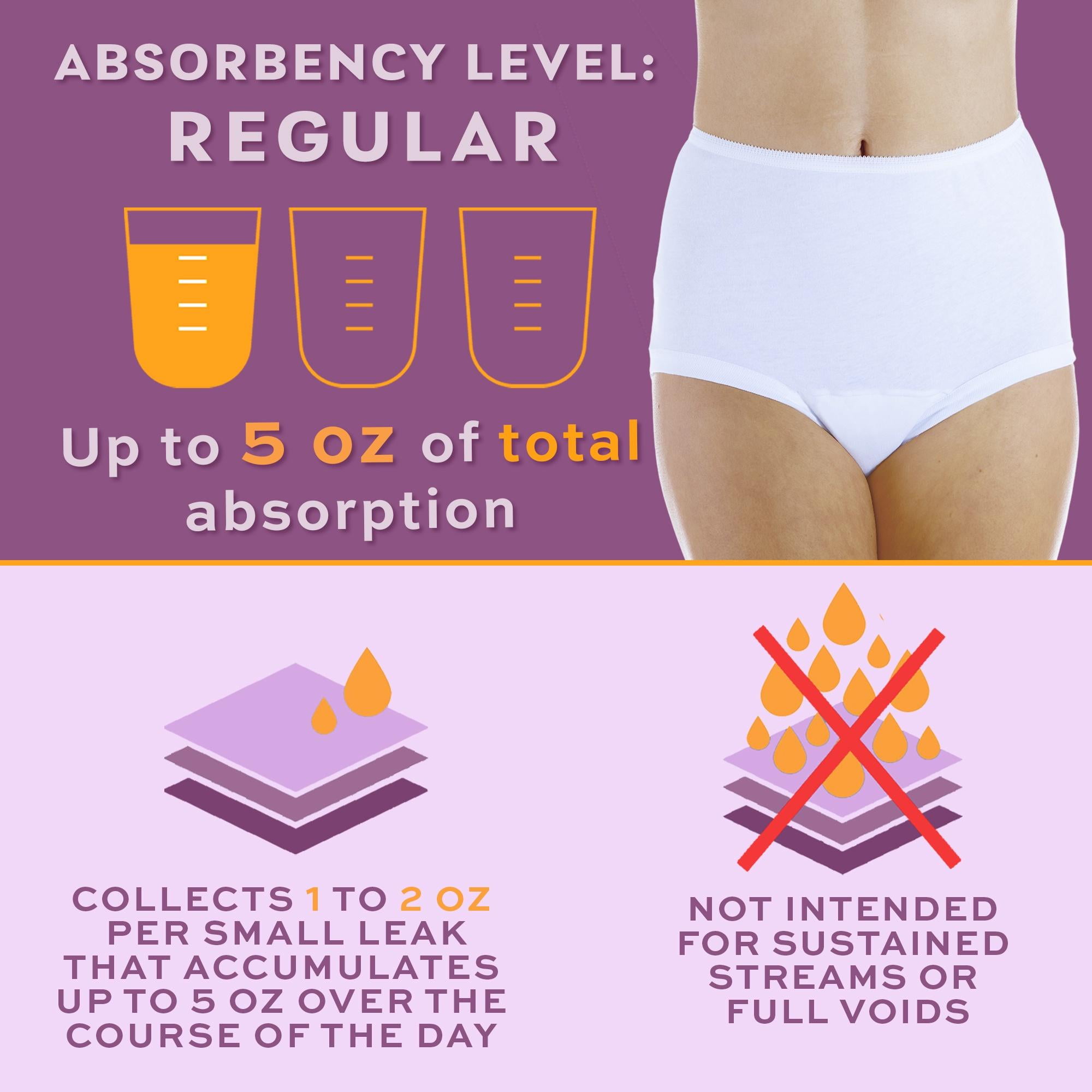
When to Seek Medical Help for Bladder Control Issues
Recognizing when to consult a healthcare provider is crucial for managing urinary incontinence effectively. Consider seeking medical attention if:
- Urine leakage is affecting your daily activities or social life
- You frequently experience a sudden, urgent need to urinate
- You often feel the need to urinate but struggle to pass urine
- Your urine stream has become progressively weaker
- You feel unable to empty your bladder completely
Is it ever too early to seek help for bladder control problems? No, it’s never too early to discuss these issues with a healthcare provider. Early intervention can often lead to more effective treatment and prevent the condition from worsening.
Types of Urinary Incontinence in Women
Understanding the different types of urinary incontinence can help women better communicate their symptoms to healthcare providers. The main types include:
Stress Incontinence
This occurs when physical movements or activities put pressure on the bladder, causing urine leakage. Common triggers include coughing, sneezing, laughing, or exercising.
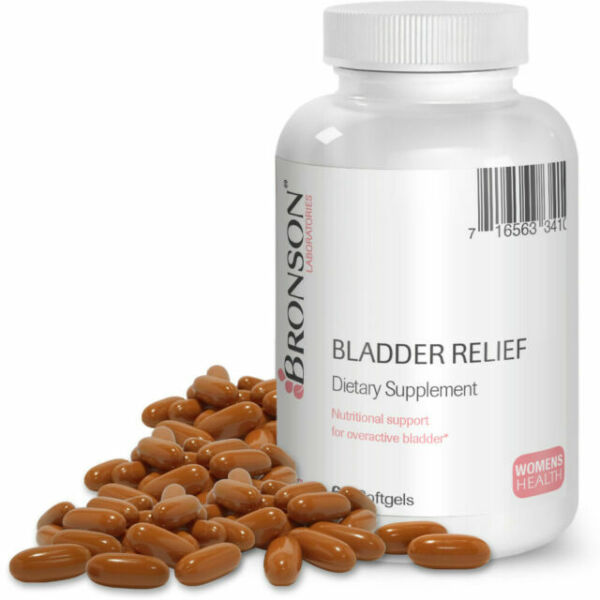
Urge Incontinence
Also known as overactive bladder, this type is characterized by a sudden, intense urge to urinate followed by involuntary loss of urine. Women with this condition may need to urinate frequently, including during the night.
Mixed Incontinence
This involves a combination of stress and urge incontinence symptoms.
Overflow Incontinence
This occurs when the bladder doesn’t empty completely, leading to frequent or constant dribbling of urine.
Can a woman experience more than one type of incontinence simultaneously? Yes, it’s possible to experience multiple types of incontinence, which is why a thorough evaluation by a healthcare professional is important for accurate diagnosis and treatment.
Causes and Risk Factors of Urinary Incontinence
Urinary incontinence can result from various factors, some of which are specific to women. Common causes and risk factors include:
- Pregnancy and childbirth
- Menopause and hormonal changes
- Pelvic organ prolapse
- Urinary tract infections
- Neurological disorders
- Certain medications
- Obesity
- Chronic coughing
- Family history of incontinence
Are all cases of urinary incontinence preventable? While not all cases can be prevented, maintaining a healthy weight, practicing pelvic floor exercises, and avoiding bladder irritants can help reduce the risk of developing incontinence.
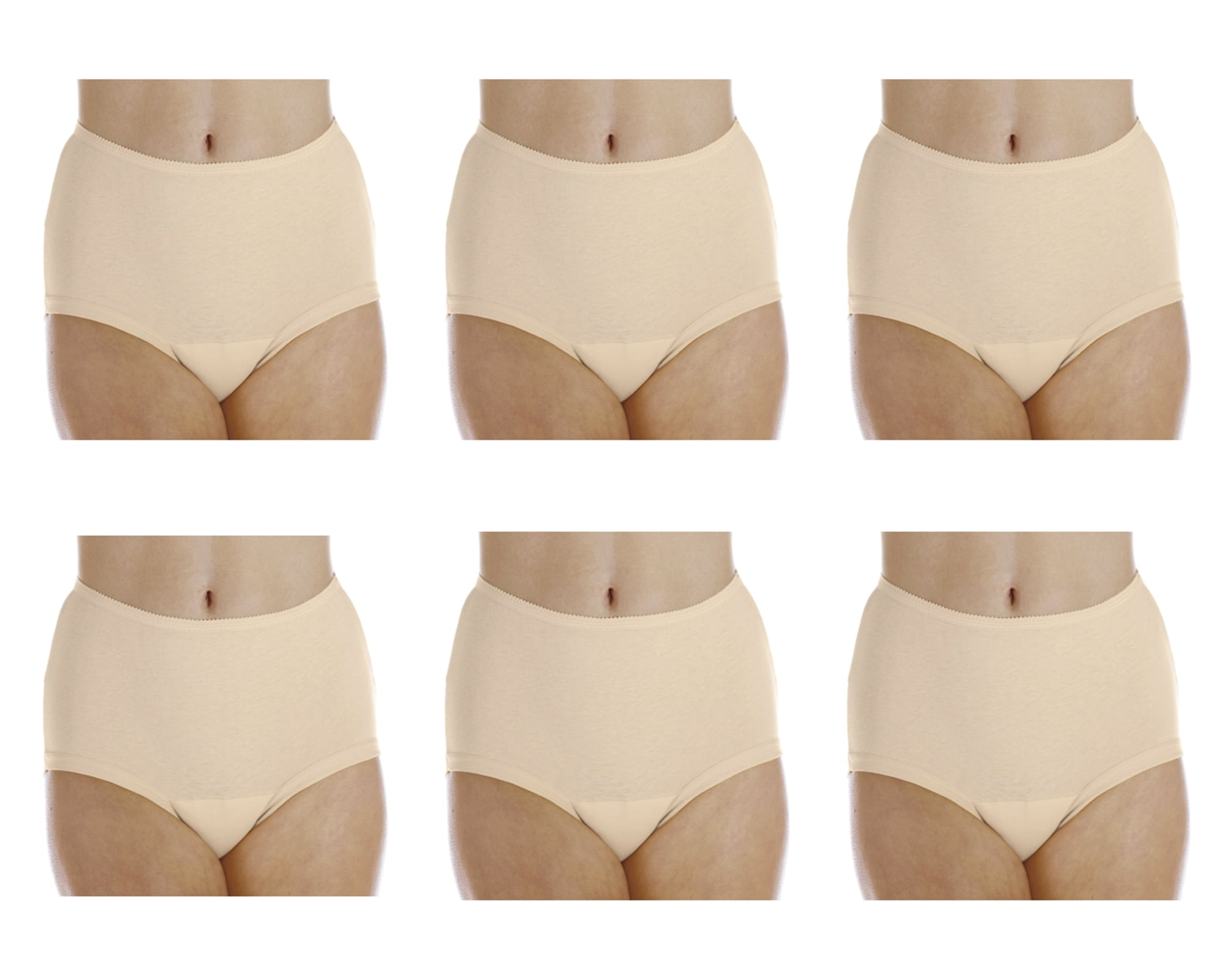
Diagnosis and Evaluation of Bladder Control Problems
Diagnosing urinary incontinence involves a comprehensive evaluation process. Healthcare providers may use several methods to assess the condition:
Medical History Review
A detailed discussion of symptoms, medical history, and lifestyle factors helps identify potential causes and risk factors.
Physical Examination
This may include a pelvic exam to assess the strength of pelvic floor muscles and check for signs of prolapse.
Bladder Diary
Patients are often asked to keep a record of their fluid intake, urination frequency, and incontinence episodes.
Urinalysis
A urine sample is tested to rule out infections or other abnormalities.
Urodynamic Testing
These tests evaluate how well the bladder, urethra, and sphincter muscles function during filling and emptying.
What information should women prepare before their medical appointment? It’s helpful to bring a detailed bladder diary, a list of current medications, and any relevant medical records to ensure a thorough evaluation.
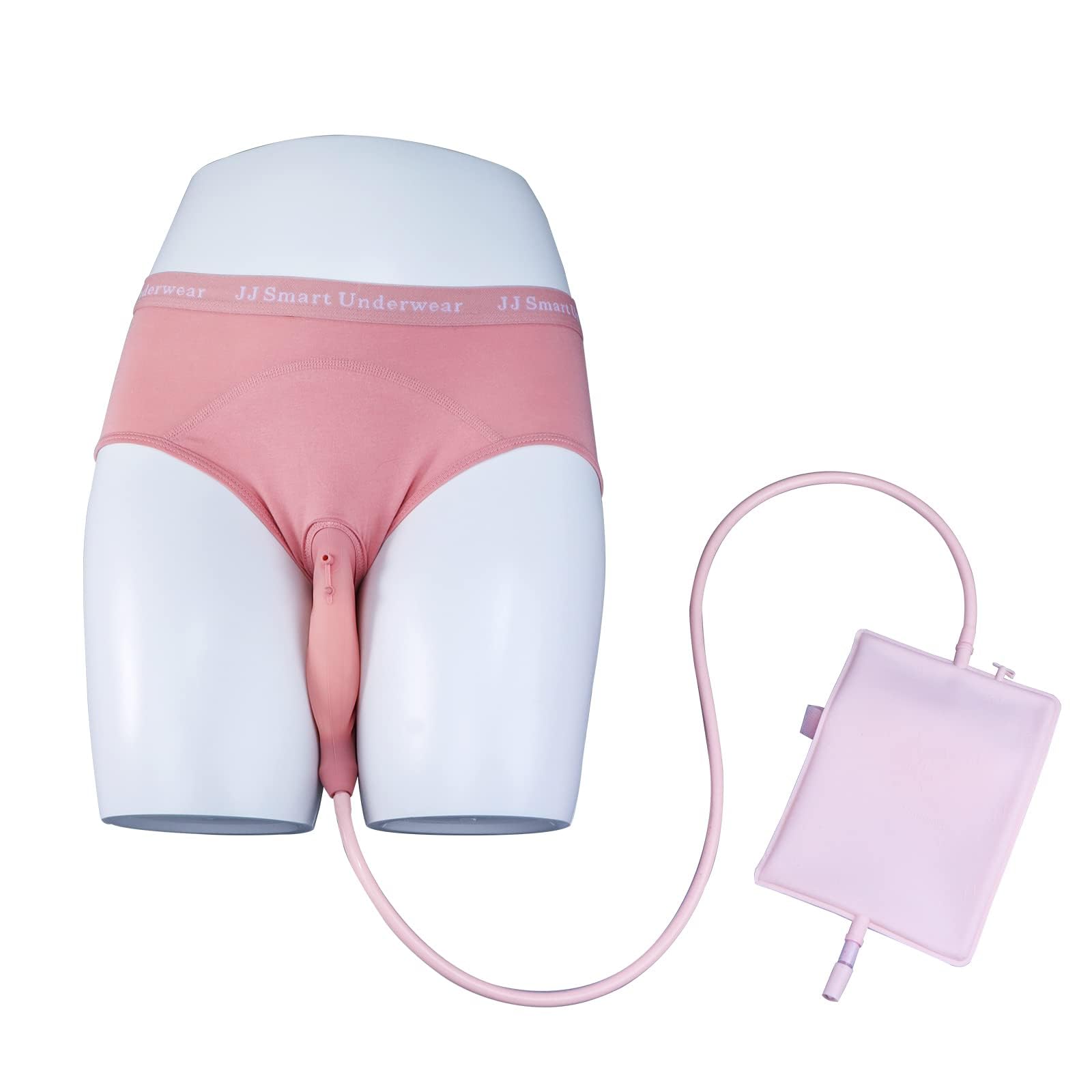
Treatment Options for Urinary Incontinence
The treatment approach for urinary incontinence depends on the type, severity, and underlying causes of the condition. Options may include:
Lifestyle Modifications
- Pelvic floor exercises (Kegel exercises)
- Bladder training techniques
- Weight loss for overweight individuals
- Dietary changes to avoid bladder irritants
Medications
Various medications can help control overactive bladder symptoms or increase bladder capacity.
Medical Devices
Devices such as pessaries or urethral inserts may be recommended for some women.
Biofeedback
This technique helps women become more aware of and control their pelvic floor muscles.
Botox Injections
Botulinum toxin injections can help relax an overactive bladder.
Nerve Stimulation
Techniques like sacral neuromodulation can help regulate bladder function.
Surgery
In some cases, surgical procedures may be recommended to provide additional support to the urethra or bladder neck.
Is there a one-size-fits-all treatment for urinary incontinence? No, treatment plans are typically tailored to each individual’s specific condition, symptoms, and preferences. A combination of approaches may be necessary for optimal results.

Living with Urinary Incontinence: Coping Strategies and Support
While seeking medical treatment is crucial, there are several strategies women can employ to manage urinary incontinence in their daily lives:
- Using absorbent products for protection and confidence
- Scheduling regular bathroom breaks
- Practicing double voiding to ensure complete bladder emptying
- Strengthening core muscles through appropriate exercises
- Managing fluid intake, especially before bedtime
- Wearing easily removable clothing for quick bathroom access
How can women find support for coping with urinary incontinence? Support groups, online forums, and counseling services can provide valuable emotional support and practical advice for managing the condition. Many healthcare providers can also offer resources and referrals to support services.
Innovations and Future Directions in Urinary Incontinence Treatment
The field of urology continues to evolve, bringing new hope for women with bladder control issues. Some promising areas of research and innovation include:
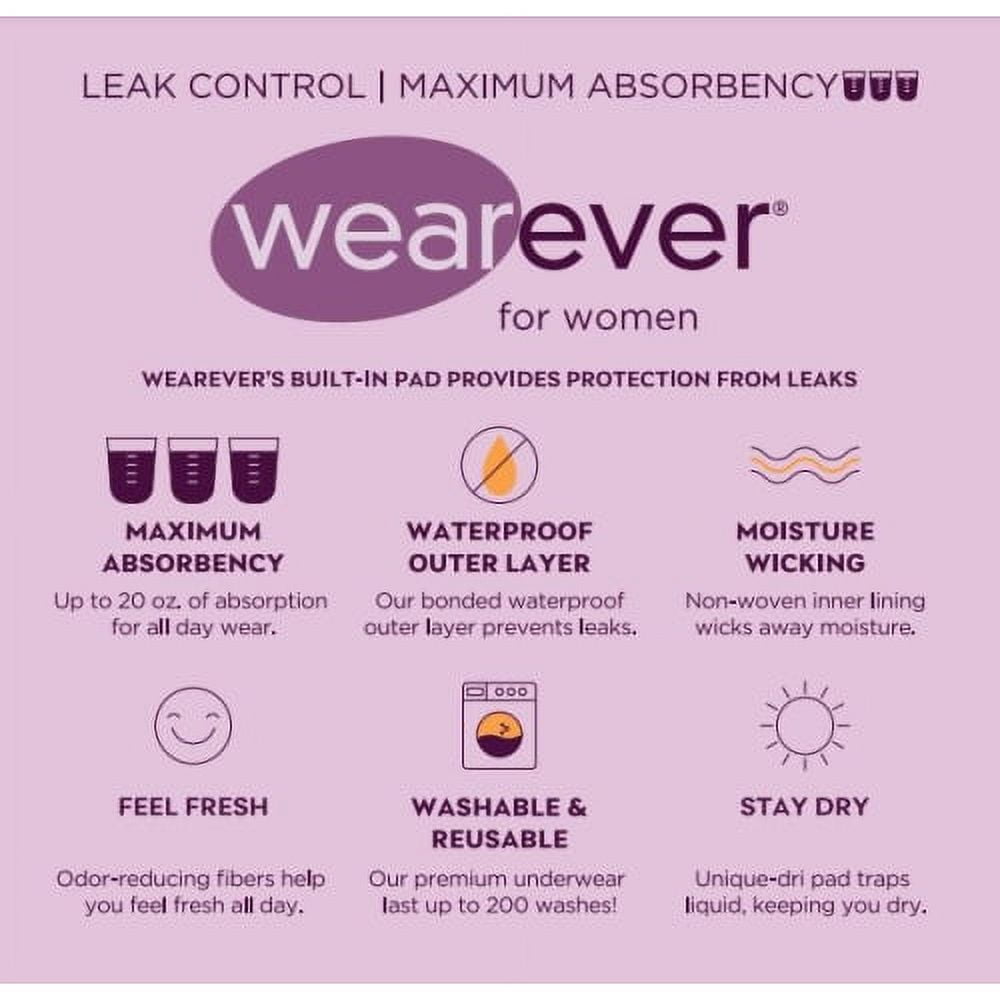
Stem Cell Therapy
Researchers are exploring the use of stem cells to regenerate and strengthen pelvic floor muscles and tissues.
Advanced Nerve Stimulation Techniques
New methods of neuromodulation are being developed to provide more targeted and effective treatment for overactive bladder.
Improved Pharmacological Approaches
Ongoing research aims to develop medications with fewer side effects and more specific action on bladder function.
Minimally Invasive Surgical Techniques
Advancements in surgical procedures are focusing on reducing recovery time and improving long-term outcomes.
What role does artificial intelligence play in the future of urinary incontinence treatment? AI technologies are being explored for their potential in predicting treatment outcomes, personalizing care plans, and even developing smart devices for incontinence management.
Urinary incontinence, while common, should not be accepted as an inevitable part of womanhood or aging. With proper diagnosis and treatment, many women can significantly improve their symptoms and quality of life. The key is to overcome the stigma associated with bladder control problems and seek help from healthcare professionals. By understanding the condition, recognizing its impact, and exploring available treatment options, women can take control of their bladder health and lead fuller, more confident lives.
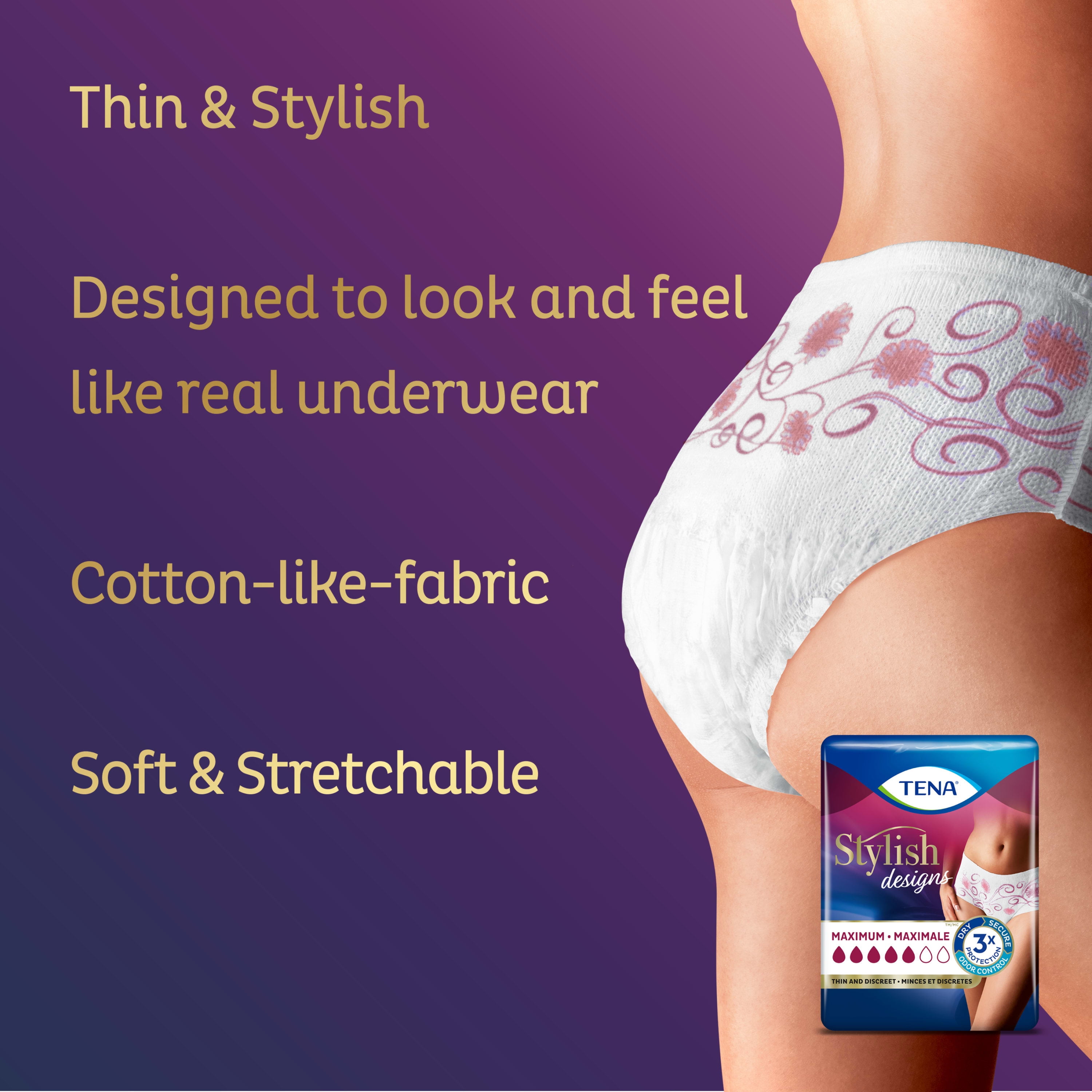
Bladder control problems in women: Seek treatment
Bladder control problems in women: Seek treatment
Recognize the warning signs and symptoms of a bladder control problem. Know when you should seek a doctor’s help and how you can get the most out of your visit.
By Mayo Clinic Staff
If you’re one of the many women who experience bladder control problems, don’t let embarrassment keep you from getting the help you need. Leaking urine, having to urinate frequently and experiencing other symptoms of urinary incontinence aren’t trivial consequences of childbirth or a natural part of aging.
Not all doctors routinely ask about urinary function during an exam. It’s up to you to take the first step. If you have bladder control problems, tell your doctor about them and ask for help.
Why to seek help
Bladder control problems require medical attention for several reasons. Reduced bladder control may:
- Cause you to restrict your physical activities
- Lead you to withdraw from social interactions
- Increase risk of falling if you have balance problems and rush to the bathroom to avoid leaking urine
Sometimes having a bladder control problem means you may have a serious underlying medical condition, such as diabetes or kidney disease.
When to seek help
A few isolated incidents of urinary incontinence don’t necessarily require medical attention. And most people, as they age, have to get up to urinate at night. But if the problem affects your quality of life, consider having your symptoms evaluated.
Make an appointment with your primary care provider if:
- You’re embarrassed by urine leakage, and you avoid important activities because of it
- You often feel urgency to urinate and rush to a bathroom, but sometimes don’t make it in time
- You often feel the need to urinate, but you’re unable to pass urine
- You notice that your urine stream is getting progressively weaker, or you feel as if you can’t empty your bladder well
Most of the time, symptoms can be improved.
When to seek a specialist
Many health care providers can evaluate bladder control problems without referring you to a specialist. In spite of better understanding and treatment of urinary incontinence, some providers may consider it an inevitable consequence of childbearing, menopause or aging. Others may lack the time, training or experience that make them likely to consider you for evaluation or treatment.
If your doctor dismisses symptoms that have an impact on your quality of life, or if the treatments he or she prescribes fail, ask for referral to a specialist. Doctors who specialize in urinary disorders include:
- Geriatrician. This medical doctor specializes in the care of older adults, often with emphasis on problems related to common quality-of-life issues, such as urinary incontinence.
- Urogynecologist. This is an obstetrician-gynecologist with additional training in problems that affect the pelvic floor — the network of muscles, ligaments, connective tissue and nerves that helps support and control the bladder and other pelvic organs.
- Urologist. A urologist specializes in male and female urinary disorders, as well as the male reproductive system.
Bladder diary: A detailed symptom record
Before your visit, ask your doctor’s office for a bladder diary and how to use it so that you can track information for several days in a row.
A bladder diary is a detailed, day-to-day record of your symptoms and other information related to your urinary habits. It can help you and your doctor determine the causes of bladder control problems and the most effective treatments.
To figure out how much urine you pass, you can use any collection device that allows you to measure ounces or milliliters.
Medical history review
Your visit will be more productive if you provide a good medical history. Make a list of:
- Any surgeries, childbirths, illnesses, injuries and medical procedures, along with approximate dates
- Current health problems, such as diabetes or any condition that affects your ability to walk or rise rapidly to a standing position
- Past and current problems with your urinary system
- Medications you’re taking, including each drug’s brand or generic name, dosage, when you take it, and what you take it for
Medications can be associated with bladder control problems, so list everything — prescriptions, over-the-counter drugs, vitamins, minerals, herbs and other supplements. If you’re not sure whether something counts as a medication, put it on the list.
If you’re not sure whether something counts as a medication, put it on the list.
What to expect from treatment
As a first step, your doctor may recommend lifestyle changes to “train” your bladder, such as performing pelvic-strengthening exercises (Kegel exercises) and following a schedule for when you drink fluids and use the bathroom.
For some women, medications help. For others, surgery provides effect treatment. But, both medications and surgery have side effects you’ll want to discuss with your doctor before deciding on these treatment options. What’s best for you depends on the type and severity of your bladder control problem.
Your bladder control problems may significantly improve after treatment. Any improvement, however, counts as a success, as long as it helps you to do what you like and enhances your quality of life.
Feb. 02, 2019
Show references
- Duralde ER, et al. Bridging the gap: Determinants of undiagnosed or untreated urinary incontinence in women. American Journal of Obstetrics and Gynecology. 2016;214:266e1.
- Lukacz ES. Evaluation of women with urinary incontinence. https://www.uptodate.com/contents/search. Accessed Jan. 30, 2019.
- Bladder control problems (urinary incontinence). National Institute of Diabetes and Digestive and Kidney Diseases. https://www.niddk.nih.gov/health-information/urologic-diseases/bladder-control-problems/all-content. Accessed Jan. 30, 2019.
- Qaseem A, et al. Nonsurgical management of urinary incontinence in women: A clinical practice guideline from the American College of Physicians. Annals of Internal Medicine. 2014;161:429.
- Lukacz ES. Treatment of urinary incontinence in women. https://www.uptodate.com/contents/search. Accessed Jan. 30, 2019.
- Urinary incontinence. U.S. Department of Health and Human Services, Office on Women’s Health. https://www.womenshealth.gov/a-z-topics/urinary-incontinence.
 Accessed Jan. 30, 2019.
Accessed Jan. 30, 2019. - Wood LN, et al. Urinary incontinence in women. The BMJ. 2014;349:g4531.
- Wein AJ, et al., eds. Evaluation and Management of Women with Urinary Incontinence and Pelvic Prolapse. Campbell-Walsh Urology. 11th ed. Philadelphia, Pa.: Saunders Elsevier; 2016. http://www.clinicalkey.com. Accessed Jan. 16, 2016.
- Lightner DL (expert opinion). Mayo Clinic, Rochester, Minn. Jan. 20, 2016.
See more In-depth
Products and Services
- Book: Mayo Clinic on Managing Incontinence
- Book: Mayo Clinic The Menopause Solution
.
Symptoms & Causes of Bladder Control Problems (Urinary Incontinence)
In this section:
What are the symptoms of bladder control problems?
Signs and symptoms of urinary incontinence can include
- leaking urine during everyday activities, such as lifting, bending, coughing, or exercising
- feeling a sudden, strong urge to urinate right away
- leaking urine without any warning or urge
- being unable to reach a toilet in time
- wetting your bed during sleep
You may have bladder control problems if you limit your activities in fear of not making it to a bathroom in time.
When should I see a health care professional?
See a health care professional if you have symptoms of a bladder problem, such as trouble urinating, a loss of bladder control, waking to use the bathroom, pelvic pain, or leaking urine.
Bladder problems can affect your quality of life and cause other health problems. Your doctor may be able to help you treat your UI by recommending a lifestyle change or a change in how much medicine you normally take.
See a health care professional if you
- can’t pass urine or empty your bladder
- urinate too often—8 or more bathroom visits a day—also called frequency
- see blood in the urine, also called hematuria
- have bladder infection symptoms, including painful urination
These symptoms can signal a serious health problem, including inflammation of the bladder, also called cystitis, or even bladder cancer.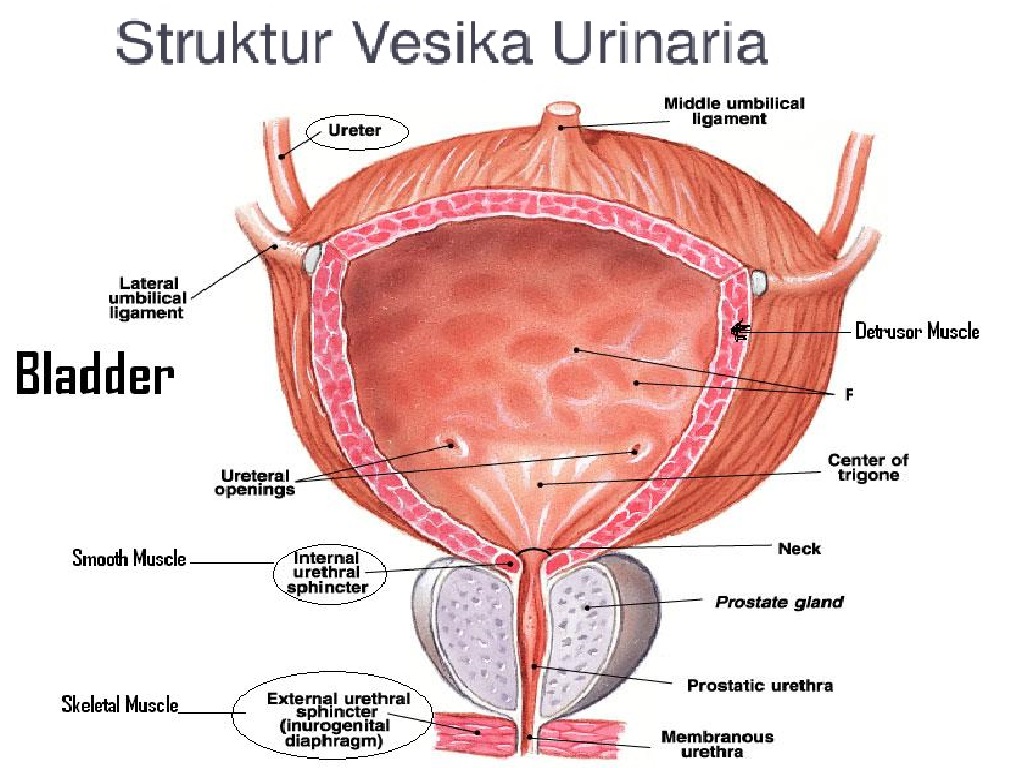
What causes bladder control problems in women?
Certain life events and health problems can lead to stress incontinence in women by weakening the pelvic floor muscles
Weak pelvic floor muscles can make it hard for your bladder to keep urine in during stress incontinence. Stress incontinence occurs when some of your movements—coughing, sneezing, laughing, or physical activity—put pressure on your bladder and cause urine to leak. A weak pelvic floor can also cause fecal incontinence, or bowel control problems.
Weak pelvic floors can cause your bladder to move downward and push slightly out of the bottom of your pelvis, causing urinary incontinence.
What causes bladder control problems in men?
Men sometimes develop UI along with prostate problems.
Prostate problems
Men have a prostate gland that surrounds the opening of the bladder. The prostate gets bigger as a man ages. When the prostate gets too big but isn’t cancerous, a man has a condition called prostate enlargement, or benign prostatic hyperplasia (BPH). Men with an enlarged prostate may have
- problems with starting to urinate
- a slow urine stream
- problems fully emptying the bladder
Men who have a history of prostate cancer may have short-term or long-term UI. The cancer can damage or block the urinary tract. Or, the surgery, radiation, or other prostate cancer treatments can lead to nerve damage, bladder spasms, or stress incontinence. Bladder control problems after prostate cancer can get better over time.
When the prostate gets too big, it can squeeze the ureter, making it hard to start urinating. You also may have a slow urine stream or be unable to completely empty your bladder.
What else causes bladder control problems in women and men?
Other health problems, including those with your nervous system, and lifestyle factors can cause or contribute to urinary incontinence (UI) in women and men.
Health changes and problems
Certain health changes and problems can lead to urinary incontinence
Some health problems can be short-term, like coughing or constipation, and can cause temporary incontinence. When a disability or a problem speaking or thinking keeps you from reaching a toilet in time, you have functional incontinence.
Problems with your nervous system are common causes of UI. UI can occur when your brain doesn’t tell the right part of your urinary tract—usually the bladder, the sphincters, or both—to do its job.
Bladder nerves and muscles can be damaged or affected by
Triggers of urinary incontinence can include drinking or touching water, hearing running water, or being in a cold environment, such as reaching into the freezer at the grocery store.
Lifestyle factors
Lifestyle factors that make women and men more likely to develop UI include
- eating habits, such as eating foods that cause constipation
- drinking habits, such as drinking alcohol or caffeinated or carbonated beverages
- certain medicines
- physical inactivity
- smoking
Temporary incontinence is usually a side effect of a medicine or short-term health condition. Temporary incontinence can also be a result of eating habits, including alcohol or caffeine use.
Definition & Facts for Bladder Control Problems (Urinary Incontinence)
In this section:
What are bladder control problems?
Bladder control problems are conditions that affect the way a person holds or releases urine. Accidental loss or leaking of urine, called urinary incontinence (UI), is one of the most common bladder control problems. UI is not a disease, but a condition that may be related to another health problem or a life event, such as pregnancy in women or prostate problems in men.
Bladder control problems can be a small annoyance or can greatly affect a person’s quality of life. A person may be too embarrassed or afraid to participate in activities or may be unable to complete his or her normal routine. For example, a person may lose urine while running or coughing. Or, it may be hard to get to a toilet in time.
A person may be too embarrassed or afraid to participate in activities or may be unable to complete his or her normal routine. For example, a person may lose urine while running or coughing. Or, it may be hard to get to a toilet in time.
Bladder control problems are common, and a person’s life may get better with proper treatment. Talk with a health care professional about urine leaks. A doctor can help treat the problem or manage symptoms, including urine odor. Caregivers may find help from a health care professional or a support group. Gynecologists, urologists, and geriatricians—doctors who specialize in the health and care of older adults—often talk to people about bladder control problems. The sooner you get help, the sooner UI may improve.
Both women and men can develop bladder problems that limit activities. Getting help from a health care professional may get you moving again.
Do bladder control problems have another name?
Urinary incontinence (UI), urine leakage, and urine loss are other names for a bladder control problem that causes urine to leak. Health care professionals may use the term LUTS, which stands for lower urinary tract symptoms, when speaking about other symptoms you may have with UI.
What are the types of bladder control problems?
The type of UI you have depends partly on the symptoms. The most common bladder control problems include
Stress incontinence
Stress incontinence occurs when movement—coughing, sneezing, laughing, or physical activity—puts pressure on the bladder and causes urine to leak.
Urgency Incontinence
Urgency incontinence occurs when someone has a strong urge, or need, to urinate and leaks before getting to a toilet. Health care professionals often refer to urgency incontinence as overactive bladder, which can happen when certain nerves and bladder muscles aren’t working together.
Sometimes a person can have urgency and stress incontinence at the same time, which is also called mixed incontinence.
Reflex incontinence
Leaking urine without a warning or urge may be reflex incontinence. It often can happen when a person’s bladder nerves are damaged and don’t “talk” to the brain correctly. During reflex incontinence, the bladder can contract, or reflex, at the wrong time, causing urine to leak. Nerve damage from health conditions such as multiple sclerosis, or from trauma such as a spinal cord injury, are among the causes of reflex incontinence. Sometimes it’s also called “unaware” or “unconscious” incontinence.
Overflow incontinence
Overflow incontinence occurs when the bladder doesn’t empty all the way, causing too much urine to stay in the bladder. With overflow incontinence, urine leaks because the bladder becomes too full.
Functional incontinence
Functional incontinence occurs when a physical disability or barrier, or a problem speaking or thinking, keeps someone from reaching the toilet in time. For example, a person in a wheelchair may not be able to get to a toilet in time, someone with arthritis may have trouble unbuttoning his or her pants, or a person with Alzheimer’s disease may not realize they need to plan to use the toilet.
Temporary incontinence
Temporary, or transient, incontinence lasts a short time due to a passing situation, such as using a certain medicine or having an illness that causes leaking, such as a bad cough from a cold.
Bedwetting
Bedwetting, also called nocturnal enuresis, doesn’t only occur in children. Some adults leak during their sleep for a variety of reasons. Certain medicines or drinking caffeine or alcohol at night can make it hard to sleep through the night without leaking urine. In some cases, the bladder can’t hold enough urine overnight. Lifestyle changes often can improve these symptoms.
Some people wet the bed because they don’t produce enough of a certain hormone at night, which could be a sign of diabetes insipidus. Other health problems, such as urinary tract infection, kidney stones, prostate enlargement, or obstructive sleep apnea can cause an adult to wet the bed or urinate frequently at night.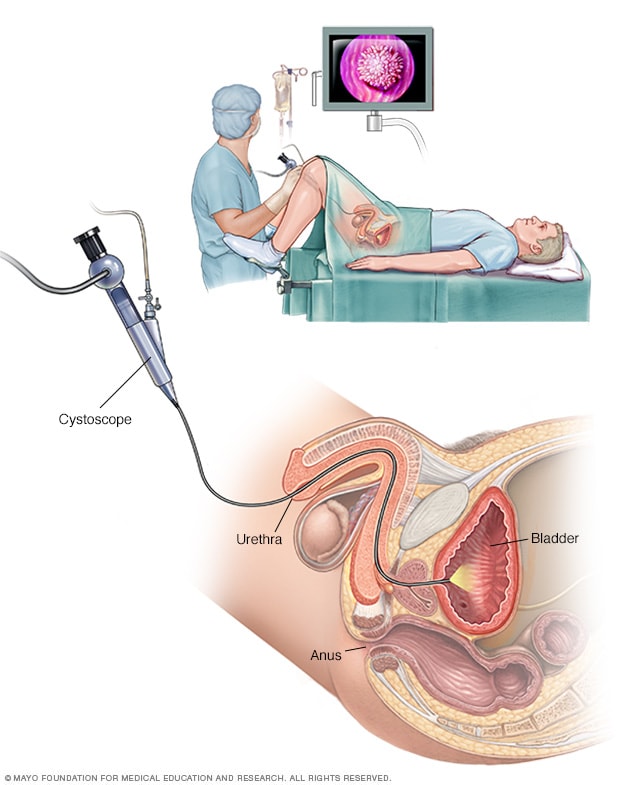
How common are bladder control problems?
Bladder control problems are common. Almost half of all women leak urine at some point in their lives.1 Women are more likely to develop UI during and after pregnancy, childbirth, and menopause. These events, and how the female urinary tract is built, make UI more common in women than men. Still, don’t accept UI as a routine part of being a woman or getting older.
As many as 1 in 3 older men may lose urine by accident.1 A man is more likely to develop UI with age because prostate problems occur more often with age.
Bladder control problems are common, especially in women who go through pregnancy or childbirth. A doctor can help treat or manage your problem.
Who is more likely to develop bladder control problems?
Factors that make you more likely to develop UI include
- being female.
- being older. As you age, your urinary tract muscles weaken, making it harder to hold in urine.
- life events, such as pregnancy, childbirth, and menopause in women and prostate problems in men.
- health problems, such as diabetes, obesity, or long-lasting constipation.
- smoking.
- birth defects. You may have a problem with the structure of your urinary tract.
Your doctor can help find the cause of a bladder control problem and let you know your options for treatment.
You are more likely to have a particular type of UI if a family member has had it, too. For example, bedwetting often runs in families, and children may outgrow it at about the same age their parents did.
What are the complications of bladder control problems?
Physical inactivity
Leaking urine may cause a person to slow down or stop being physically active. For example, running, jumping, or brisk walking may make UI worse if someone has stress incontinence. Or, perhaps a woman feels that disposable pads or briefs are uncomfortable to move in, so being active may be less fun.
Staying active is important for a person’s overall health and may prevent further bladder control problems. UI may become worse for someone who is not physically active. Physical inactivity can lead to weight gain. People who are overweight or have obesity are more likely to have bladder problems. Getting active may lead to better bladder health.
Let a health care professional know if your bladder control problems are making it difficult for you to be active.
Emotional distress
Untreated bladder problems can bring upsetting lifestyle changes. A person may avoid activities he or she once enjoyed. People might stop going to movies, meetings, or religious services because they don’t want to use the restroom in the middle of an activity or have an accident. These changes can lead to depression or social anxiety.
Intimacy problems
Bladder control problems sometimes cause people to avoid intimacy, because they are worried they may leak urine during sex. Talk with a health care professional if your bladder control problems are getting in the way of your sex life. Gynecologists and urologists regularly talk with people about health problems that interfere with sex. A healthy sex life is part of a healthy life.
Related bladder symptoms and problems
If you have UI, you are more likely to have other bladder symptoms or problems, such as
Working with a health care professional to prevent and treat these related symptoms and problems is important for the health of your bladder and your overall health.
References
[1] Buckley BS, Lapitan MCM. Prevalence of urinary incontinence in men, women, and children—current evidence: findings of the Fourth International Consultation on Incontinence. Urology. 2010;76(2):265–270.
Bladder Control Products for Urinary Incontinence
You laugh and then leak. Or you sneeze and then dribble. Maybe you just lose it all.
“Urinary incontinence” describes the broad range of bladder control problems that affect more than 12 million people. If you’re one of them, you should see a doctor. Treatments can improve or stop the problem. But over-the-counter “hygiene products” can help you manage it. There’s a lot to consider when choosing products.
If you’re one of them, you should see a doctor. Treatments can improve or stop the problem. But over-the-counter “hygiene products” can help you manage it. There’s a lot to consider when choosing products.
Absorbent Products
Liners, pads, disposable underwear, and reusable underwear absorb moisture. Products made for incontinence control “catch” the leaks and pull moisture away from your skin. That allows you to go longer between changes.
All incontinence protection products have a “saturation” point — they can hold only so much liquid — but the products don’t absorb at the same rate. Sometimes the difference can be dramatic. There’s no standard for terms such as “plus” or “ultra plus,” so try different brands to find what works best for you.
Many disposable pads, liners, and undergarments have a waterproof backing. This helps prevent overflow from reaching your clothes. The newest waterproof system uses a “breathable” plastic film that helps reduce skin irritation associated with some waterproof linings.
Choosing Your Product Style
Pads and liners come in a variety of shapes and sizes. That makes it easier to find the right fit for your body shape and lifestyle.
Liners are generally wider and longer than pads and offer better “front-to-back” protection. Pads are usually curved. Many contain elastic on the sides to cradle your body and help keep leaks from rolling over the edge.
There’s also a range of disposable undergarments with built-in protection — not just in the crotch, but throughout the entire garment. Styles range from pull-ons with elasticized legs and waists resembling a traditional cloth panty to underwear that slips on with Velcro or adhesive tabs for a customized fit. You can also find open-sided “thong style” panties held together by straps in the front and back that rest on top of the hip bone.
Guards are pads designed around a man’s anatomy and worn inside regular underwear. They’re held in place by adhesive tabs pressed against fabric. With a variation known as a “drip collector,” the penis is placed inside a protective, absorbent sack that absorbs urine flow.
With a variation known as a “drip collector,” the penis is placed inside a protective, absorbent sack that absorbs urine flow.
Continued
Disposable protection is the most costly, but it can be the most sanitary and the easiest to use, especially when you’re not at home. When at home, many people use washable and reusable pads, liners, and garments. They’re less expensive, and the garments feel more like typical underwear.
Whatever you wear, you’ll need to maintain a schedule for changing it based on your urinary habits. You don’t have to change products as soon as you leak. But you should change them if your skin feels wet.
Urinary Incontinence and Odor Control
Most incontinence pads, liners, and disposable underwear feature some type of odor control. Often, the materials are treated with a natural odor-absorbing compound such as baking soda. Sometimes, though, manufacturers add fragrance to the pad, liner, or garment. Some people find this pleasant, but for others it causes skin irritation. If you have sensitive skin, odor control compounds may cause you problems. If so, look for products that are fragrance-free and contain no chemicals for odor control.
If you accidentally leak urine onto clothing or furniture, there are several products — sprays and special detergents — that remove urine stains and odors. Most are sold in pharmacies. Some can be found in mail order health catalogs or online.
Barrier Devices for Urinary Incontinence
Some devices control the flow of urine.
Women can choose devices that go inside the vagina, like tampons or vaginal sponges. They provide temporary control by putting pressure on the tissues of the bladder. This helps keep urine from escaping and is particularly good for stress incontinence, where exercise, laughing, and sneezing causes urine to leak.
For 24-hour protection, many women find a pessary helpful. This is a plastic device that’s inserted into the vagina. It increases pressure on the urethra muscles and adds support to the pelvic region. These devices are fitted to your pelvis size, so you’ll need to visit your doctor. You can remove them for cleaning. They should be replaced each year — and that means another trip to the doctor. Ask your doctor if a pessary is a good option for you. In some cases they can make urinary incontinence worse.
These devices are fitted to your pelvis size, so you’ll need to visit your doctor. You can remove them for cleaning. They should be replaced each year — and that means another trip to the doctor. Ask your doctor if a pessary is a good option for you. In some cases they can make urinary incontinence worse.
Continued
A vaginal guard is another option. They’re disposable devices that come in three sizes. The guard is inserted into the vagina using an applicator. It prevents leaks by adding support to the pelvic structures and muscles.
For men, the primary device is a penile compression clamp. Because there are few studies on how well they work, their safety, or comfort, and because of the potential for circulation problems, many doctors advise that they be used with extreme caution.
Lifestyle Products for Urinary Incontinence
In addition to products that absorb urine, there are devices that control the flow.
For men, the primary device is a penile compression clamp. Because there are few studies focused on their efficacy, safety, or comfort, and because of the potential for causing circulation problems, many doctors advise that they be used with extreme caution.
Women have the option of intravaginal support devices — items such as tampons or vaginal sponges. They can provide temporary continence control by applying pressure on the support tissues of the bladder. This helps keep urine from escaping and is particularly good for stress incontinence, where physical exertion brings on urine loss.
For 24-hour protection, many women find a support pessary helpful. This is a plastic ring-type device that’s inserted into the vagina. It also increases pressure on the urethra muscles and adds support to the pelvic region. Because these devices must be fitted to your pelvis size, they require a doctor’s visit. They, can, however, be removed by you for cleaning, but should be replaced with a new one each year — and that necessitates another trip to the doctor. Be aware that — in some cases — a pessary can worsen urinary incontinence.
Be aware that — in some cases — a pessary can worsen urinary incontinence.
More recently, vaginal guards have become available. Vaginal guards — disposable polyurethane devices — come in three sizes. The guard is inserted into the vagina using an applicator and adds support to the pelvic structures and urethra muscles.
Skin Care Treatments
No matter how well your incontinence products work, when urine continually touches your skin, you can get rashes and even infections.
Most experts agree that changing pads or underwear whenever you feel wet can help. So can rinsing the genital area with warm water and drying it thoroughly each time you change pads.
Some people find skin care products featuring a moisture barrier helpful in reducing skin irritation. Any products for diaper rash can help.
Types of Control Loss, Causes & Treatment
Overview
How to stop a full bladder from affecting your sleep.
Why is it so difficult to talk about bladder control?
Millions of men and women suffer from loss of bladder control. Bladder incontinence is twice as common in women because pregnancy, childbirth and menopause can affect pelvic muscle strength and damage nerves that control the bladder.
Many people feel embarrassed or ashamed to talk about their bladder control problems, yet many effective treatments are available. Your doctor may not ask about urinary function during an exam, so you should speak up if you are struggling with bladder control issues.
What are the different types of bladder control loss?
- Stress incontinence is caused by sudden pressure on the bladder. Exercise, sneezing, laughing, or heavy lifting may be just a few reasons for urine leakage.
 Younger and middle-aged women near or at menopause experience this most commonly.
Younger and middle-aged women near or at menopause experience this most commonly. - Urge incontinence happens when you are unable to hold on when you have an urge to urinate and cannot make it to the toilet. People with diabetes, stroke, MS, Alzheimer’s, and Parkinson’s disease may have this problem.
- Overflow incontinence happens when the bladder is constantly full and cannot be completely emptied. An enlarged prostate blocking the urethra (tube that urine flows through) or a spinal cord injury may cause this condition.
- Functional incontinence may occur if you have a condition that prevents you from getting to the toilet in time. Arthritis or other disorders can keep you from being able to move quickly.
Symptoms and Causes
What are the causes of loss of bladder control?
Short-term loss of bladder control may come from urinary tract infections, vaginal infections, constipation, and some medications. However, if your loss of bladder control lasts longer than a week, tell your doctor.
Long-term loss of bladder control may be caused by:
- Weak muscles in the bladder
- Overactive bladder muscles
- Damage to nerves in the bladder
- Blockage from an enlarged prostate
- Excess weightWhy get treatment for loss of bladder control?
Bladder control problems can be embarrassing and can cause you to needlessly cut back on the activities that you enjoy. They may also be a sign of a serious underlying health condition. Bladder incontinence may be a symptom of kidney disease, diabetes, Alzheimer’s, Parkinson’s, multiple sclerosis (MS), and other diseases.
Management and Treatment
How is loss of bladder control treated?
Non-surgical treatments are often recommended to help treat bladder control issues.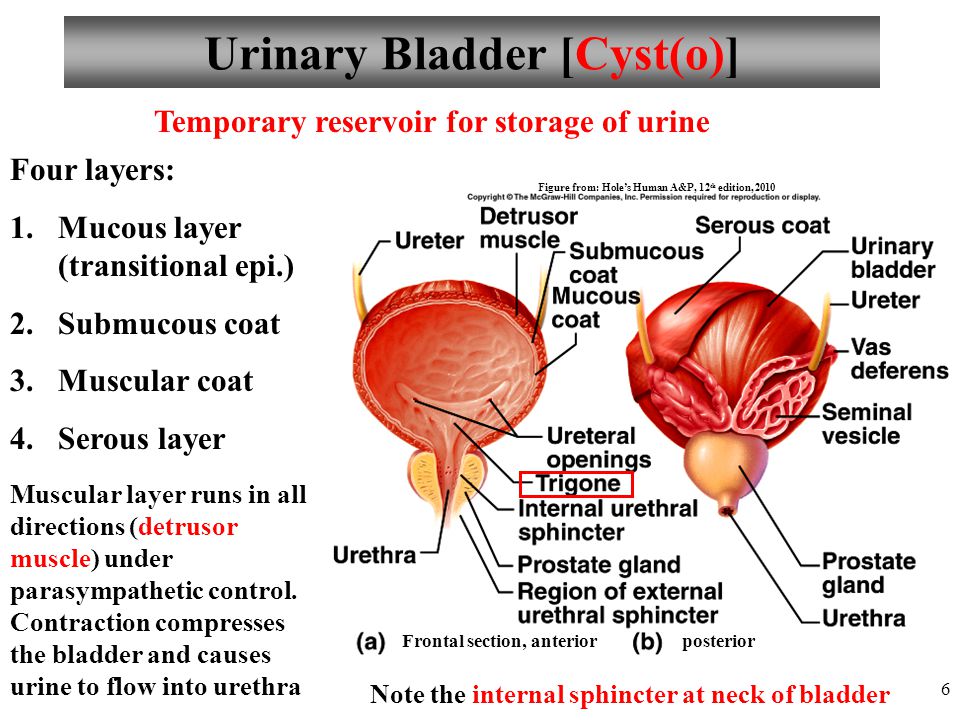 These include:
These include:
- Physical therapy and exercise
- Weight loss
- Reducing intake of alcohol and caffeine
- Electrical stimulation of the nerves that control the bladder
- Bladder retraining by going to the bathroom at set times
- Kegel exercises to strengthen pelvic muscles
- Bladder control device inserted into vagina that repositions urethra to reduce leakage
- Biofeedback to help patients learn to control the bladder muscles
Depending on the type of leakage and how bothersome it is—and if patients do not respond to the non-surgical treatments—surgery and other interventions can be very successful. In most cases, they can be done as an outpatient procedure.
8 Causes of Urinary Leaks and 8 Ways to Stop Them
Ever have a little “oops” leak down there? That’s how it usually starts. We’re talking about urinary incontinence.
Some people with this medical condition may have frequent or sudden urges to urinate. For other people, the disorder results in an inability to control the bladder. This can lead to leaks.
Both men and women can have urinary incontinence (UI). Women experience this condition about twice as often. Up to 45 percent of women have UI to some degree.
Incidents of UI tend to increase with age. Among women age 20 to 39, up to 37 percent report some degree of UI. Among women older than 60, up to 39 percent report daily UI.
What Causes Urinary Incontinence?
There are many causes of UI, including:
- Pregnancy, childbirth, menopause and the structure of the female urinary tract are reasons the condition is more common in women.
- Diseases like diabetes, Parkinson’s and multiple sclerosis (MS) can damage the nerves that control your bladder.
- Urinary tract diseases, infections, strokes, surgeries and treatments for pelvic cancers can also cause UI.
- Tumors or obstructions.

- Poor kidney function.
- Certain medications.
- Certain foods or beverages.
- High fluid intake
Types of Urinary Incontinence
There are several types of UI. Each has a unique set of symptoms.
- Stress incontinence — Common in women, especially if you’ve given birth vaginally. Triggered by coughing, sneezing, laughing, bending or lifting. These triggers can cause urine leakage.
- Urge incontinence — Common in older men and women. Characterized by increased urinary urgency (overactive bladder), an uncontrollable flow of urine and increased urinary frequency.
- Overflow incontinence — Extremely frequent urination and an inability to completely empty the bladder. Dribbling urine.
- Functional incontinence — When you can’t move, think or communicate well enough to get to the bathroom on time. Most prevalent among the elderly and people with diseases such as Alzheimer’s or Parkinson’s disease.
- Mixed incontinence — A combination of the symptoms described above.
Nerve damage and prostate problems (in men) can cause incontinence.
What Are the Treatments for Urinary Incontinence?
Here’s good news: A number of treatment options are available. You can take a number of steps yourself to remedy UI. If self-care doesn’t help, your health care provider can discuss approaches that may work for you and your lifestyle. Here are some of the common medical treatments.
- Behavioral modification therapy — Your provider can suggest techniques for you to adopt. These can include limiting the amount of fluid you drink, eliminating caffeine (which can irritate your bladder) or teaching yourself to hold your urine longer.
- Physical therapy or exercises — These strengthen your pelvic floor, which is the group of muscles that help to control urine flow.

- Vaginal insert (pessary) — Meant to support the urethra, these removable vaginal inserts can help prevent stress incontinence.
- Medications — Some block chemical messages in the nerves around the bladder, which relax the bladder muscles to increase your bladder capacity.
- Injections of medications — Certain substances can thicken your urethra wall so it seals more tightly to stop urine from leaking.
- Botox — For women who haven’t been helped by other injections, Botox injections can relax overactive bladder muscles. Benefits can last several months. Repeat injections may be needed once or twice each year.
- InterStim® therapy — A small device – about the size of a stopwatch – is implanted under the skin of your hip. It sends mild electric impulses to the nerve that controls your bladder muscles.
- Sling procedures — During this minimally invasive surgery, your provider puts a sling made of synthetic or natural material around your urethra to support it, which helps prevent stress incontinence.
Your health care provider can review the benefits of each treatment and how they might work for you. If you’re thinking about a surgical solution, consider getting a second opinion.
If you’re coping with urinary incontinence, take heart. Help is available.
If you’d like more everyday health help, visit the Aurora Health Care Facebook page!
The information presented in this site is intended for general information and educational purposes. It is not intended to replace the advice of your own physician. Contact your physician if you believe you have a health problem.
Solutions for a Leaky Bladder
Research has found that at least half of people with urinary incontinence don’t discuss the condition with a health care provider. But there’s no need to feel embarrassed.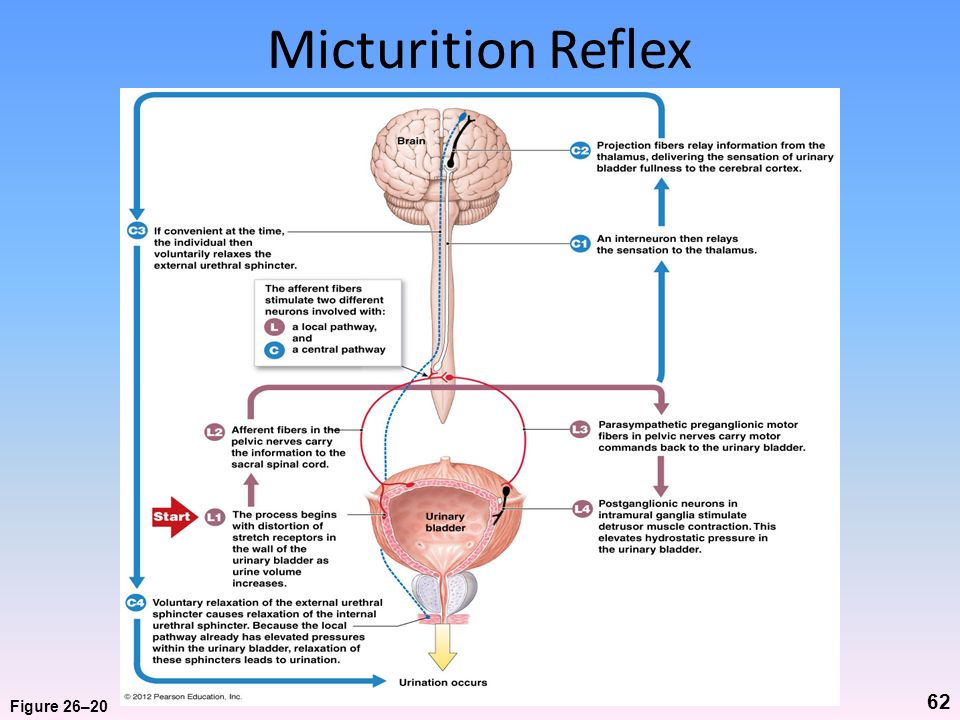 If you have a leaky bladder, you’re definitely not alone. Bladder leakage, or urinary incontinence, affects women and men of all ages, though it becomes more common later in life.
If you have a leaky bladder, you’re definitely not alone. Bladder leakage, or urinary incontinence, affects women and men of all ages, though it becomes more common later in life.
And it’s definitely worth discussing, because of the many ways it can interfere with enjoying daily life—from exercise and travel to social outings and romance, says E. James Wright, M.D., director of urology at Johns Hopkins Bayview Medical Center.
What Causes Bladder Leaks?
There are two main types of urinary incontinence:
Stress incontinence
If you have this type, activities that raise the pressure inside your abdomen cause urine to leak through the ring of muscle in your bladder that normally holds it in. Coughing, sneezing, jumping and lifting heavy objects could lead to a leak.
Going through childbirth, smoking or being overweight can raise the risk of stress incontinence for women, Wright says. Stress incontinence in men is rare, and when it arises, it’s often due to prostate cancer treatment, such as radiation or surgery.
Urge incontinence
With this type, your brain, spinal cord and bladder don’t work together properly to allow you to hold and release urine at the right time. Your bladder may suddenly empty itself without warning. Or you may feel like you need to urinate frequently, a problem called overactive bladder.
Some diseases that affect the nervous system, such as multiple sclerosis or stroke, can cause this kind of incontinence, says Wright. In men, an enlarged prostate may be the culprit. But in many cases, doctors don’t know what causes urge incontinence.
It is possible to have both types of incontinence at the same time.
Regaining Bladder Control
No matter what’s causing your bladder leakage, Wright offers good news: “The vast majority of cases can either be cured or significantly improved.” Some strategies that can help:
Watch your diet
You may be able to cut down on bladder leaks by avoiding certain foods, drinks and ingredients, including:
- Alcohol
- Artificial sweeteners
- Caffeine
- Carbonated beverages
- Chocolate
- Citrus fruits and tomatoes
- Corn syrup
- Honey
- Spicy foods
Shed extra pounds
Research has found that overweight and obese women who lose weight report fewer episodes of bladder leakage.
Train your bladder
Certain exercises can help you keep your bladder under better control:
- Kegel exercises. During Kegels, you regularly tighten certain muscles in your pelvis to strengthen them, which helps you become more leak-proof.
- The Knack. With this method, you do a Kegel just as you cough, sneeze or do another activity that tends to trigger a leak.
These require practice, Wright says. You may need a professional—your doctor or a physical therapist—to show you how to do them properly.
Know your options
Depending on the type of incontinence you have, your doctor may recommend one of the following treatments, Wright says:
- Medications that can help your bladder hold more, reduce urgency and improve your ability to empty your bladder. (There is even a recently approved over-the-counter patch for women with overactive bladder that helps relax the bladder muscle; the patch is available for men by prescription.)
- An injection of Botox into the lining of your bladder to block the release of a chemical that prompts muscle contractions.
- An injection of a thick substance around your urethra (the tube that carries urine out of your body) to help it hold back urine.
- Surgery to insert a strip of mesh to press against your urethra and prevent leaks.
“Many solutions are available, but you can only get help for what you’re willing to talk about and explain,” Wright says.
90,000 Physiological causes of loss of urinary control in men and women
Temporary incontinence.
Functional incontinence – when the normal regulation of urination is impeded by mental or physical (inability to quickly reach the toilet) problems, while the excretory system itself is in order.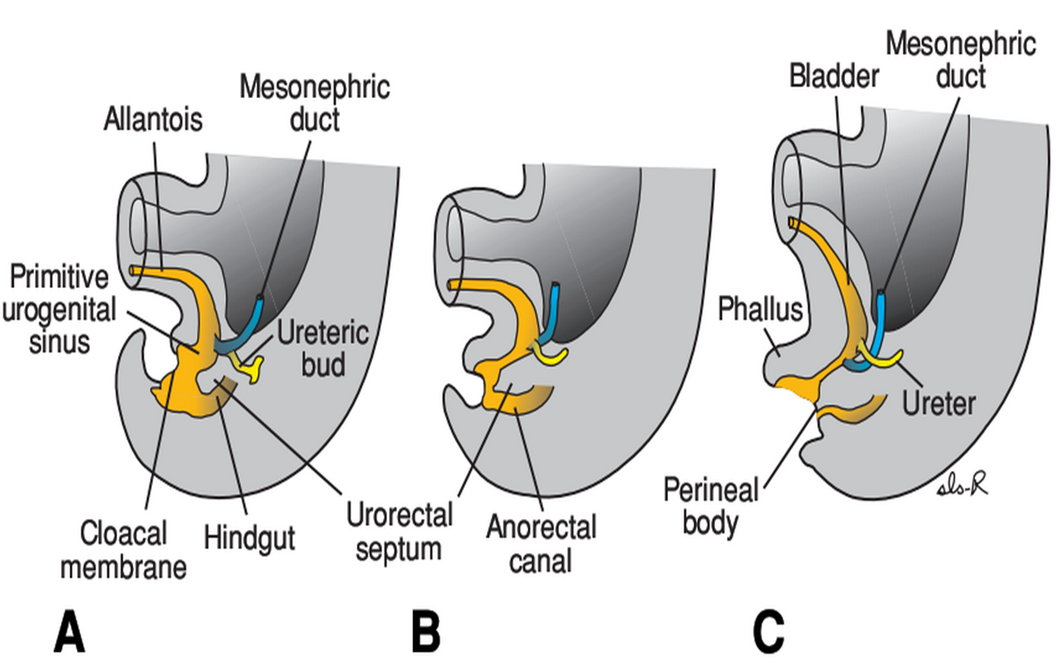 Parkinson’s disease, Alzheimer’s disease and other forms of dementia lead to functional incontinence.
Parkinson’s disease, Alzheimer’s disease and other forms of dementia lead to functional incontinence.
Urgent incontinence .People who leak urine after a sudden, intense urge to urinate have urge incontinence. This is due to an increase in the tone of the muscles of the bladder, which can be due to a large number of reasons, such as: mental stress, nerve damage (with diabetes, stroke), infection, stones in the bladder, swelling. In this situation, a complete examination is necessary in order to identify the root cause and prescribe adequate treatment. Acute incontinence most often begins with an acute urge to urinate if it is impossible to carry it out.This condition progresses to the point where it becomes impossible to control the process of urination. For urge incontinence, drug therapy is indicated to help regulate bladder tone, as well as Kegel exercises to strengthen the pelvic floor muscles and “accustom” the bladder to work at regular intervals.
Stress incontinence. Every fifth woman over the age of 40 knows what stress incontinence is. This is when a small portion of urine is released during coughing, laughing, sneezing, physical exertion (especially those that increase intra-abdominal pressure).Stress urinary incontinence in the vast majority of cases is characteristic of women, but does not depend on age – both young women and professional athletes are familiar with this. We are not talking about emotional stress, but about weakened muscles of the sphincter and pelvic floor, which leads to the fact that a stressful effect, whether it be a sudden movement or an increase in intra-abdominal pressure, leads to the squeezing of a portion of urine from the bladder into the urethra. In this situation, exercises to strengthen the muscles of the pelvic floor and Kegel exercises can help.
Overfill incontinence. This type of incontinence is common among older men. The cause in most cases is a benign overgrowth of prostate tissue, which compresses the urethra and affects urine flow. Symptoms of this pathology are rare in men under 40, but by 60 more than half of the strong half of humanity will become familiar with the symptoms of overflow incontinence, and by the age of 80 their number will increase to 90%. Due to the blockage of the urethra, urine constantly accumulates in the bladder, stretching its walls.Symptoms vary, but the most common ones are difficulty urinating (inability to urinate, weak flow), urinary leakage, and frequent urge to urinate, especially at night. Problems with urination are not necessarily caused by an enlarged prostate. Treatment is most often surgery or bladder catheterization.
Symptoms of this pathology are rare in men under 40, but by 60 more than half of the strong half of humanity will become familiar with the symptoms of overflow incontinence, and by the age of 80 their number will increase to 90%. Due to the blockage of the urethra, urine constantly accumulates in the bladder, stretching its walls.Symptoms vary, but the most common ones are difficulty urinating (inability to urinate, weak flow), urinary leakage, and frequent urge to urinate, especially at night. Problems with urination are not necessarily caused by an enlarged prostate. Treatment is most often surgery or bladder catheterization.
Mixed type of incontinence. It is a combination of stress and urgency incontinence symptoms. It occurs in a significant number of patients.A complete examination is necessary to identify the causes.
90,000 Bladder Leakage and Urinary Incontinence: Facts, Treatment and More
By: Women’s Care Florida Staff
Don’t be afraid to laugh too hard or go far from the toilet. If so, you may experience some of the negative effects of a bladder leak or urinary incontinence. Between 25 and 45 percent of women experience some degree of urinary incontinence.We define bladder leakage as the inability to control your bladder. Moreover, it is treatable.
One in three women in the United States will experience a condition requiring the care of a urogynecologist. We understand that it can be embarrassing to discuss this. However, talk to your doctor about any incontinence-related issues. This is the first step towards proper treatment. Then you can regain control of your bladder.
Causes of urinary incontinence
Sometimes temporary problems can cause urinary incontinence.Many of these can include certain medications or a urinary tract infection. It is also caused by longer-term problems with the bladder or pelvic muscles. Women are generally twice as likely to have urinary incontinence as men. Things like pregnancy, motherhood, and menopause contribute to urinary incontinence.
Women are generally twice as likely to have urinary incontinence as men. Things like pregnancy, motherhood, and menopause contribute to urinary incontinence.
Consequences that can cause urinary incontinence include:
Many causes of urinary incontinence are treatable. What’s more, with treatment, you can restore normal bladder function.
Bladder leak symptoms
In addition, the symptoms of urinary incontinence vary. They can be minor or minor leaks, or the inability to get to the bathroom in time. You may experience different types of symptoms. However, it depends on the severity of your condition.
Incontinence stress
Due to the load on the bladder, a small amount of urine is excreted from the bladder. In addition, stress can include laughing, sneezing, coughing, or lifting weights.
Persistent urinary incontinence
You may feel the need to urgently go to the toilet during the day.
Urinary incontinence
Because your bladder does not empty completely, you often experience a small stream of urine throughout the day. If you experience any of these symptoms, consider talking to your obstetrician / gynecologist about treatment.
Treatment of bladder leak and urinary incontinence
Non-surgical treatments:
Bladder training
You can reduce urinary incontinence by slowly training your bladder to wait.To do this, you wait longer before using the toilet after you feel the urge to go.
Diet changes
Drink less fluids or avoid substances that stimulate the bladder. These include caffeine or alcohol. By avoiding this, you can better control toilet use.
New bathroom practices
Set a time to go to the bathroom every few hours instead of waiting. Also use the toilet and wait a few minutes.Then use it again to control urinary incontinence.
Pelvic Floor Exercise
Physical therapists can help you strengthen your pelvic floor muscles.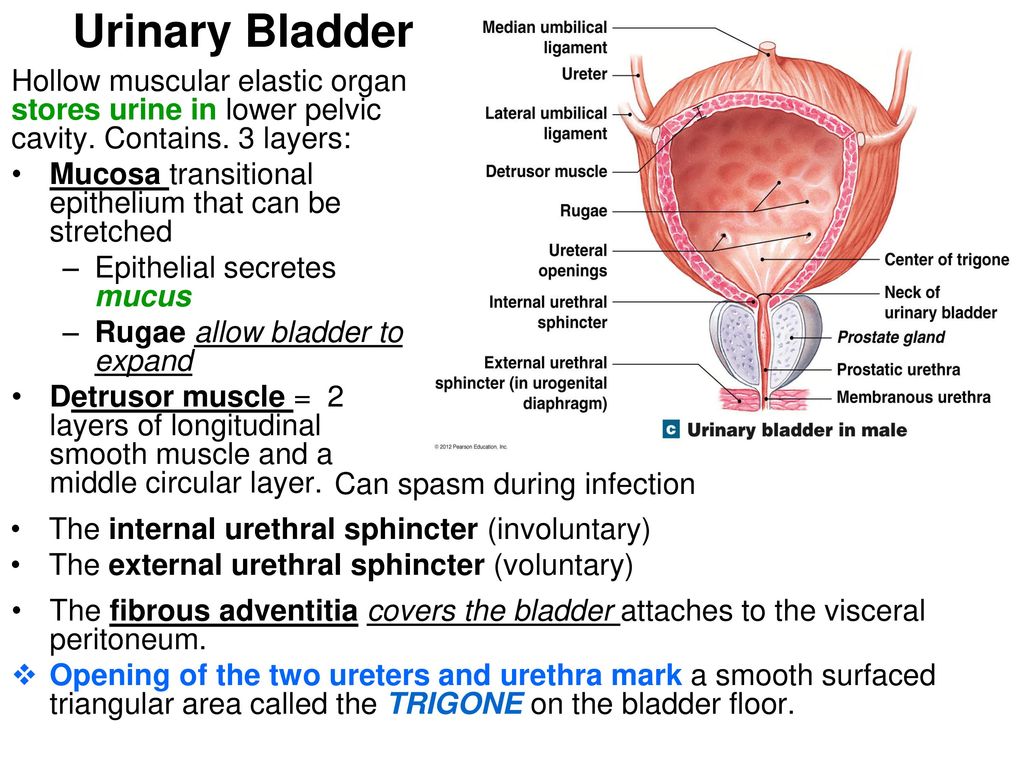 These are the muscles that support the bladder and control urination.
These are the muscles that support the bladder and control urination.
medicines
Medication can help you control your urge and relax your bladder.
Electrical stimulation
In addition, temporary electrical stimulation of the nerves around the bladder can help you regain control.Continuous nerve stimulation devices can also help with urges.
Botox injections
In addition, Botox injections can help relax the nerves and muscles of the bladder. Plus, relaxing can give you better control.
Surgical treatments:
Sometimes non-surgical treatments do not help. You can try something else. In addition, you and your doctor can learn about surgical treatments for urinary incontinence.
Sling procedures
The surgeon may apply a bandage to hold the urethra in place. Surgeons create them from your own fabric or synthetic fabric. They can also stop urinary incontinence.
Prolapse surgery
Your doctor will correct any bladder prolapse or other conditions that cause urinary incontinence.
If you need help with incontinence, contact the Urogynecology Experts in Women’s Care Florida.We offer non-surgical and surgical solutions for urinary incontinence problems.
Bladder training for bladder control
Pelvic floor muscle strengthening exercises help strengthen the muscles that support the urethra and bladder – by constantly squeezing them, you tone and strengthen the muscles, preventing incontinence.
Bladder training – scheduling and adhering to a toilet trip to maintain control over the work of the bladder.If you drink one and a half liters of liquid a day, then you must go to the toilet up to 8 times. If you have to do this more often, bladder training may help.
You will learn about the main types of incontinence and change the usual pattern of bladder emptying: This means that you will no longer go to the toilet “just like that, just in case” and will not run there at the last moment. You will train your bladder to hold more urine and learn to lengthen the periods between trips to the toilet.Try to distract yourself, squeeze your pelvic floor muscles, and not rush to the toilet immediately, barely feeling the urge to urinate. Planning trips to the bathroom and keeping a urination diary is helpful. This will gradually increase the time between trips to the toilet and learn to control the work of the bladder.
Behavior change – lifestyle adaptation to minimize symptoms, prevent or treat incontinence. Try not to drink too much or too little fluids throughout the day, and avoid drinks that irritate the bladder.These include caffeinated drinks and energy drinks. You can also set up an exercise regimen and change your diet to help you lose weight, which can also cause incontinence. Another good habit is maintaining hygiene after going to the toilet.
Besides bladder training, there are other treatments. Clinical monitoring (biofeedback) is a method of collecting and evaluating information (using a computer or sensors) during exercises to strengthen the muscles of the pelvic floor to ensure that you are contracting the right muscles.Another approach is to use a special vaginal device that supports the urethra, bladder, vagina, uterus, and rectum. Other treatment options include the introduction of bulking agents around the urethra to create additional volume, as well as surgery.
Finally, you can use our incontinence care products to monitor your condition.
Find out more on other TENA websites.
90,000 Urinary incontinence in women | City Clinical Hospital. V.M.Buyanova
Urinary incontinence in women is manifested after the implementation of everyday life actions: prolonged laughing, coughing, prolonged physical exertion, changing the position of the body during sleep, lifting heavy objects, sexual intercourse.
Almost every fifth woman in the world faced this problem. At the same time, not all of them seek treatment.In Moscow, only 1.5% of women make an appointment with a doctor with urinary incontinence. In America and Europe, the statistics are much worse – 30-40%.
The most common cases are:
– stress urinary incontinence in women. It can occur anywhere, depending on the complexity of the surrounding situation, its psychological, emotional side. It is considered the most common problem in urology;
– coughing incontinence in women.There is a sharp jump in pressure inside the abdominal cavity, the muscles of the bladder are in strong tension. If the sphincters are weak, urine will leak. The same situation is observed with urinary incontinence when sneezing in women. The reasons for the rejection are completely similar.
– nighttime urinary incontinence in women. Uncontrolled urination process. As a rule, children suffer from “enuresis”;
– postpartum urinary incontinence in women. It occurs due to a violation, weakening of the pelvic floor muscles;
– urinary incontinence in young women.May occur due to all of the above reasons;
– urinary incontinence in elderly women. It is divided into three types: stressful (due to pressure on the abdominal cavity), forced (with any sudden urge), total (uncontrollable, occurs constantly).
Spontaneous loss of urine does not harm a woman’s life in any way. At the same time, it brings serious physical and mental inconvenience, affects various aspects of the activity.
Most women do not dare to tell about their problem even to the doctor.This is due to her deepest intimacy, as well as ignorance of a quick way to eliminate urinary incontinence.
Symptoms of urinary incontinence in women
The main symptom of urinary incontinence in women is the spontaneous flow of urine when performing various daily activities, physical activity and other situations.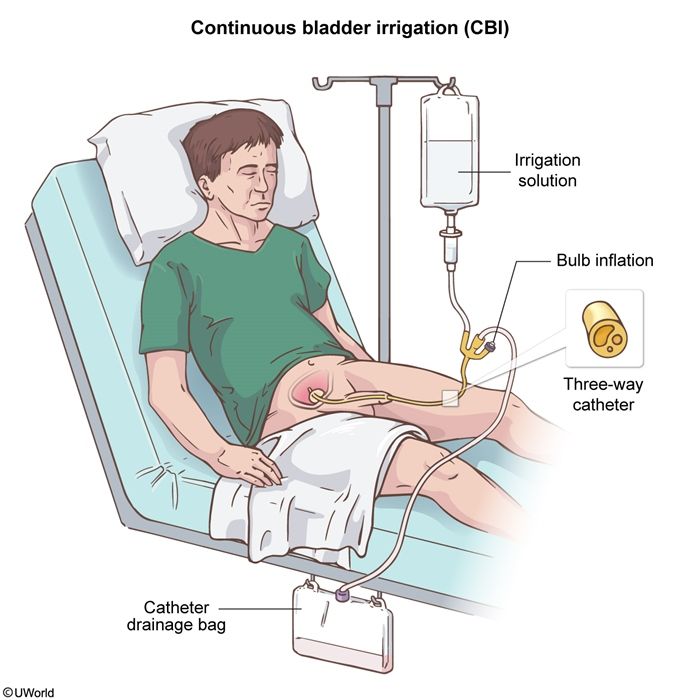 Also, the symptoms of the disease include sudden urges, a feeling of incomplete emptying of the bladder, a feeling of a foreign object in the vagina.
Also, the symptoms of the disease include sudden urges, a feeling of incomplete emptying of the bladder, a feeling of a foreign object in the vagina.
Causes of urinary incontinence
A disease such as urinary incontinence in women may have different causes. The main ones are:
– pregnancy, difficult childbirth;
– strong physical activity;
– operations;
– genetic predisposition.
Age also affects the development of this disease and is a common cause of urinary incontinence in women after 50 years. If the manifestations are minor, conservative treatment with special drugs is used.If the situation is difficult, there are pronounced changes in anatomy, surgical intervention is prescribed.
The reasons for bedwetting in women is the lack of muscle control. At this point, they are relaxed. In addition, infectious diseases and disorders of the nervous system can also affect urine leakage.
What is the danger of urinary incontinence in women?
At its core, the disease does not harm a woman’s health in any way. But with its seemingly minimal danger, urinary incontinence can completely ruin life, limit it, make it restrained.A woman will lose her mobile phone and will experience constant discomfort. This can affect your career and professional growth.
Prevention, diagnosis and treatment of urinary incontinence
The first step in diagnosing urinary incontinence in women is to consult a specialist. The doctor prescribes a complete examination that helps to identify the causes of the disease. In the future, the most acceptable method of treatment is selected.
For a successful operation, specific, clear indications are required.Without them, intervention cannot be carried out; it can only exacerbate the problem.
Treatment of urinary incontinence in women is carried out with the help of minimally invasive surgery using the most modern instruments and equipment..jpg)
A special synthetic implant is placed under the middle of the urethra – a mesh, which reliably supports the organ, adjacent tissues, and prevents urine leakage. The prosthesis is made of the most modern materials – polypropylene, which has been used in medicine for several years.Its structure freely passes blood cells, thereby preventing the occurrence of inflammatory processes. The implant is inserted through a small 1 cm incision in the vagina. Also, incisions with a length of 2-3 mm are made on the inner thighs. The operation takes 20-30 minutes.
Treatment of bedwetting in women can also be carried out with the help of implants. Depending on the complexity of the case.
The patient is discharged after surgery every other day. During the next month, it is necessary to adhere to sexual rest, as well as limit physical activity.
Urinary incontinence and pregnancy
Urinary incontinence is considered a common occurrence during pregnancy. The longer the period, the stronger the disease becomes. It can also persist after childbirth.
Causes of involuntary urine leakage during pregnancy:
– The pelvic floor muscles weaken. This is due to changes in the hormonal background of the woman’s body;
– changes in the size of the uterus. The organ enlarges, thereby compressing the bladder;
– child’s movements.When pregnancy is late, the fetus is actively moving. The baby’s arms and legs can hit the bladder.
Despite all the safety of the disease for the health of the body, it brings significant discomfort to a woman’s life. And only timely treatment will normalize the situation. The main thing is not to be ashamed of this and immediately consult a doctor!
90,000 Operations for urinary incontinence in women
Installation of TVT slings – surgical correction of urinary incontinence in women.
What does this operation include?
Sling surgery involves replacing the damaged area of the urogenital diaphragm with a synthetic bioinert tape – sling. The implant is subsequently overgrown with the woman’s own tissue and supports the urethra with an increase in intra-abdominal pressure as her own organ would do, as a result of which urinary incontinence is eliminated.
The implant is subsequently overgrown with the woman’s own tissue and supports the urethra with an increase in intra-abdominal pressure as her own organ would do, as a result of which urinary incontinence is eliminated.
Who is this operation indicated for?
The main indication is the so-called stress urinary incontinence, that is, its involuntary discharge when coughing, sneezing, laughing, bending over and lifting weights, i.e.e. situations, accompanied by an increase in intra-abdominal pressure. This discharge of urine is not accompanied by an urge to urinate.
Stress urinary incontinence must be distinguished from imperative, when involuntary emptying of the bladder occurs due to its increased sensitivity to filling. In such cases, urination is accompanied by an urge that cannot be contained. At the same time, there is no dripping of urine with an increase in intra-abdominal pressure.
In some cases, a combination of stress and imperative components of urinary incontinence is possible.
What types of TVT surgery for urinary incontinence in women are there?
The TVT technique for urinary incontinence in women was developed in the early nineties by the physician Ulf Ulmsten. Traditionally, the TVT procedure consisted of passing a polypropylene tape through an incision in the anterior vaginal wall to the anterior abdominal wall in the suprapubic region.
Since the 2000s, another method of performing the procedure for women, TVT-Obturator, abbreviated as TVT-O, began to gain popularity.The difference lies in the use of inside-out technique, which reduces the number of complications, damage to the bladder and other pelvic organs. The tape is delivered to the crotch or inner thighs, as shown in the figure below.
TVT and TVT-O package
The “TVT package is used for the procedure.
The TVT bag consists of a polypropylene tape connected to special puncher needles in the sheath. The width of the tape is about 1 cm, the length is 40 cm.Also, a steel guiding probe and a steel pusher are used for the procedure.
The width of the tape is about 1 cm, the length is 40 cm.Also, a steel guiding probe and a steel pusher are used for the procedure.
Fig. A – steel pusher, B – polypropylene mesh, C – steel guiding probe, D – polypropylene mesh with needles.
The package for the TVT-O procedure consists of a polypropylene tape connected to the needles in sheaths and a steel guide.
TVT-O set.
Polypropylene tape
Polypropylene tape, or sling, is a non-absorbable, strong and elastic synthetic material that is indifferent to the human body, does not cause inflammation or a rejection reaction.
Preparing for TVT surgery for urinary incontinence in women
Preparation for TVT surgery for urinary incontinence in women is standard. On an outpatient basis, no earlier than seven days before the operation, it is necessary to pass a general analysis of urine and blood, a biochemical blood test, a coagulogram, tests for hepatitis and HIV. An ECG, chest x-ray, or ultrasound may also be needed. You will receive detailed information and a list of necessary tests at the consultation with a doctor.
If you have a urinary tract infection, the operation will have to be postponed.After a course of antibiotic therapy and a negative urine test for infection, you can re-schedule the surgery.
Please make sure you inform your healthcare professional if you have any of the following factors:
- artificial heart valves;
- coronary artery stent;
- joint prosthesis;
- prosthetic blood vessel;
- neurosurgical (cerebrospinal fluid) shunts;
- any other implants;
- presence of drug intolerance;
- regular intake of Aspirin, Warfarin, Clopidogrel (Plavix), as well as any other drugs for chronic diseases;
- current or past infection with methicillin-resistant Staphylococcus aureus;
- Pelvic floor surgeries in the past.
You must go to the hospital a few hours before the operation.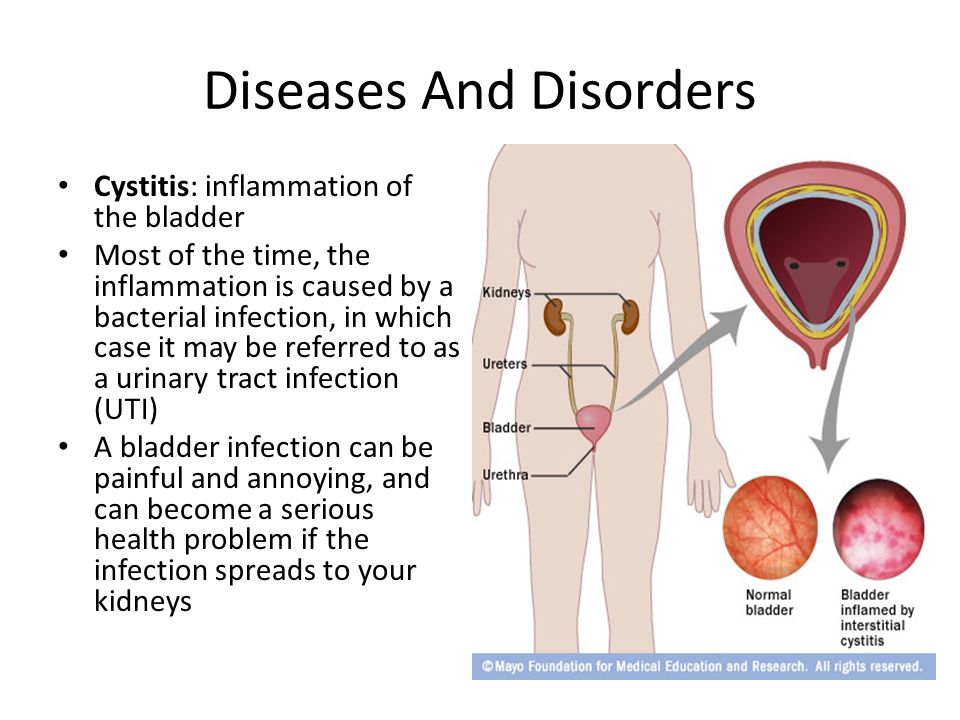 You will be given a medical history and taken to a special ward to prepare for surgery.
You will be given a medical history and taken to a special ward to prepare for surgery.
It is recommended to shave the perineal area on the eve of the operation. If the surgery is performed under general anesthesia, no food or drink is allowed on the day of the surgery, and a light dinner is recommended no later than 7 p.m. the day before.
Anesthesia during TVT operation
The sling procedure for women can be performed either under local anesthesia supplemented by sedation, or under general or spinal anesthesia.The choice depends on the protocols of the clinic, the preferences of the woman herself, etc. On the eve of the operation, you can discuss this with the doctor and choose the most suitable option for yourself.
How to perform a TVT operation
The TVT operation for urinary incontinence in a woman is performed in a supine position, with legs apart. The sling is inserted through the vagina.
After the patient is placed on the operating table, the perineum and suprapubic region are prepared, disinfectants are disinfected and covered with sterile linen.A catheter is inserted into the bladder through the urethra.
If local anesthesia is used, an anesthetic is injected into the exit area of the sling using a syringe and needle. The anterior vaginal wall is anesthetized.
A small incision is made in the anterior wall of the vagina, corresponding to the projection of the middle of the urethra. The urethra is discharged. In TVT surgery with needles, the ends of the sling are brought out into the suprapubic area, where small incisions are made beforehand. In the process of passing the needles, special techniques are used to prevent damage to the bladder, cystoscopy is performed, and a visual examination of the bladder to exclude injury.After the sling is pulled, the needles are cut off. The ends of the tape are immersed under the skin, the anterior wall of the vagina is sutured.
A – TVT-O, B – TVT for urinary incontinence in women.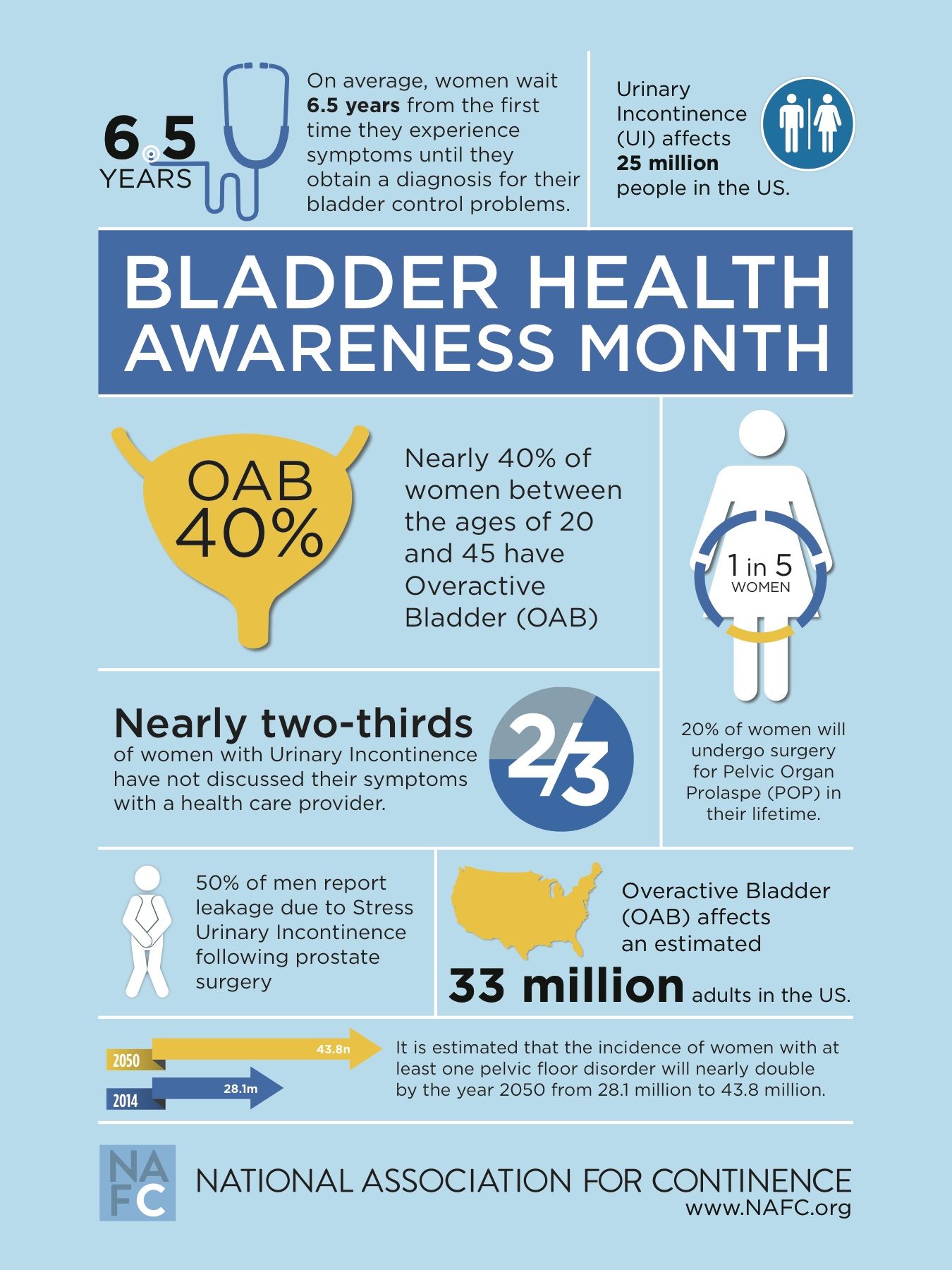
In the TVT-O technique, the sling is carried out with needles at an angle of 45% through the openings of the pelvic bones (Figure A), the pioneering needles are brought out to the perineum or the inner surface of the thigh, cut off, the ends of the sling are immersed under the skin, the anterior vaginal wall is sutured.
The advantage of TVT operations is the surgeon’s ability to control the loop tension during the operation.The efficiency of the surgical intervention reaches 95%. The advantage of the TVT-O technique is low trauma with minimal risk of injury to the pelvic organs.
Surgical intervention takes 20 to 40 minutes. The urinary catheter is removed the day after surgery. The pain syndrome is not very pronounced; if necessary, non-narcotic pain medications can be prescribed. You can go home the day after your surgery.
After surgery, you may notice difficulty emptying your bladder.Sometimes you may need to re-insert the catheter to drain the urine. This is a short-term phenomenon that disappears shortly after surgery.
Complete recovery from treatment takes two to four weeks.
It is recommended not to lift heavy objects for the first 6 weeks after surgery. It is recommended to get behind the wheel no earlier than after 1-2 weeks. Resumption of sexual activity is possible no earlier than after 4 weeks.
Complications of TVT surgery for urinary incontinence in women
- Damage to the bladder.The incidence is 4 cases per 100 patients. Typical for traditional TVT.
- Hematoma, hemorrhage in the area of the needle exit. The frequency is 1 case per 100 patients. Does not require treatment, it goes away on its own.
- Bleeding due to vascular damage. Up to 1 in 500. Surgery or blood transfusion may be required.
- Bladder infection. It can be observed in every fifth patient during the first six weeks after surgery.Requires the appointment of antibiotics.
- Violation of urination, slower emptying of the bladder, worsening of symptoms of concomitant urge incontinence.
 It passes over time.
It passes over time. - One in 1000 cases may cause damage to the intestines or nerves.
- Before the operation, you will talk with your doctor, he will tell you in detail about the risks and possible complications. You can ask your questions. At the end, you must give written consent to surgery.
Is there an alternative to this operation?
For mild stress incontinence, specific exercises (training of the pelvic floor muscles) can improve the ability to self-control urinary incontinence. With ineffective exercise and more severe degrees of stress incontinence, correction is only possible with surgical methods.
You can get more detailed information about this type of operation from our doctors. You can sign up for a consultation about stress urinary incontinence by calling the phone number listed on the website.
8 (4832) 72-09-03
Types of urinary incontinence
What is urinary incontinence?
According to the official definition, this name is a condition in which there is an involuntary flow of urine that cannot be controlled by the patient. Most often, this condition does not pose a threat to the patient’s life, but it is a very significant social problem for a person.
What are the types of urinary incontinence?
There are many classifications of these violations, to varying degrees reflecting the characteristics of each case.But one of the most complete, covering all types of pathologies, is the classification developed by the International Continence Society – the Standards Committee of the International Society for Urinary Continence. At the moment, it is she who is the most popular among doctors. This classification includes the following types:
1. Urinary incontinence.
Imperative, or urgent, urinary incontinence is characterized by the fact that the patient is not able to keep urine at the peak of the expressed urge to urinate. The reason for this form of incontinence lies in the increased activity of the muscles in the bladder wall. Urgent urinary incontinence can be caused by abnormalities in the brain or spinal cord, hormonal disorders, inflammation, or damage to the bladder wall.
The reason for this form of incontinence lies in the increased activity of the muscles in the bladder wall. Urgent urinary incontinence can be caused by abnormalities in the brain or spinal cord, hormonal disorders, inflammation, or damage to the bladder wall.
2. Stress urinary incontinence.
This type of incontinence is associated with involuntary loss of urine with a sharp increase in pressure in the abdominal cavity. Stress urinary incontinence can be caused by laughing, lifting heavy objects, coughing, sneezing, etc.In addition, in this case, the contractility of the sphincters that retain urine decreases due to hormonal disorders, anatomical disorders of the muscles and organs of the small pelvis, or a violation of nerve conduction in this area.
Stress urinary incontinence in women often develops after complicated childbirth, and in men it sometimes occurs after surgery to remove the prostate. The age factor also plays an important role.
3. Unconscious urinary incontinence.
Unconscious, or reflex, urinary incontinence is caused by a violation of the conduction of nerve impulses from the brain structures to the bladder.As a result, the patient does not feel the need to urinate even with a full bladder. Sooner or later, the bladder empties reflexively.
4. Continuous urine leakage.
Uncontrolled constant flow of urine is caused by both impaired nerve conduction and the failure of the blocking sphincters. In addition, the loss of the ability of the muscles of the bladder to contract leads to the fact that more fluid accumulates in it than it can hold, and urine gradually begins to leak.
5. Nocturnal urinary incontinence.
The term “enuresis” often refers to any type of urinary incontinence. But in the medical world, this word only defines urinary incontinence during sleep. Enuresis as a disease is diagnosed only if there are episodes of bedwetting at the age of more than 5 years.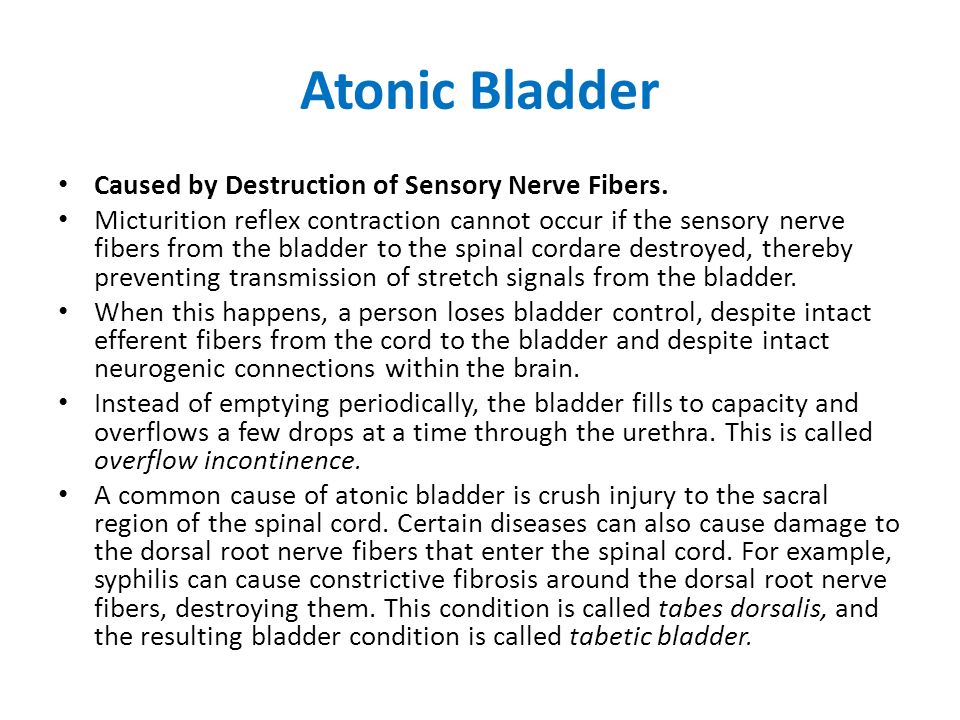 It can be primary, that is, it develops from birth, or secondary, that is, it arises at a later date after the formation of the reflex of urinary retention.
It can be primary, that is, it develops from birth, or secondary, that is, it arises at a later date after the formation of the reflex of urinary retention.
The cause of bedwetting can be:
- Immaturity of the urinary system;
- pathologies of the brain and spinal cord;
- genetic predisposition;
- mental trauma;
- infectious and inflammatory diseases;
- endocrine pathologies, etc.d.
6. Leakage of urine after completion of urination.
This disorder is caused by a failure of the muscles that release urine. In such a situation, after the natural emptying of the bladder, there is still some fluid in it. The force of contraction of the muscle walls of the bladder is insufficient, and this is what leads to such delays. Then the residual urine begins to gradually flow outward under the influence of gravity, and the weakened muscular apparatus is not able to resist this.
Leakage of urine after the end of natural urination can result in:
- tumors or narrowing of the urethra;
- urinary tract infections;
- weakness of the pelvic muscles;
- prostatitis and prostate adenoma;
- increased body weight;
- spinal hernias and spinal cord injuries;
- violation of the blood supply to the brain;
- operations on the pelvic organs.
Tweet
All articles
90,000 Urinary incontinence – real stress
Every third woman suffers from this disease, but only 4% of patients go to the doctor, which is due to the intimacy of the question and the conviction of women that the occurrence of this problem is inevitable and associated with natural age-related changes. Frequently asked questions by women are answered by Shevchenko Nikolai Alekseevich, head of the gynecological department of the City Clinical Hospital No.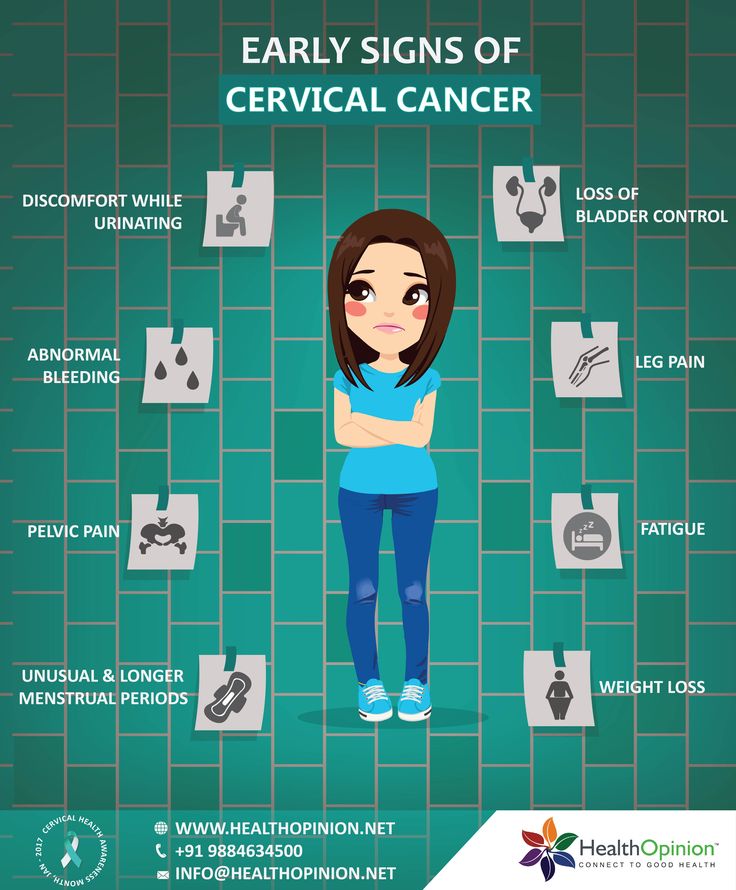 52 .
52 .
What is stress urinary incontinence?
– Stress urinary incontinence, or in other words, stress urinary incontinence is a condition in which involuntary leakage of urine occurs with any increase in intra-abdominal pressure: lifting weights, coughing, sneezing, playing sports. In milder forms of incontinence, leakage can occur only with excessive, extreme stress. In more severe cases, even normal walking or changes in body position can cause incontinence.
What causes it?
– The main cause is dysfunction of the anatomical structures that support the urethra. The development of incontinence is caused by birth trauma, hormonal changes during menopause, hard physical work, overweight, cough and other conditions associated with increased intra-abdominal pressure.
How is stress urinary incontinence treated?
– The main treatment for stress urinary incontinence is surgery.To date, the “gold standard” and at the same time the most studied operation is the installation of a synthetic mid-urethral sling. Other methods, such as the introduction of bulking substances under the urethra, colposuspension according to Birch, plastic surgery of the anterior vaginal wall, etc., are less effective and have serious side effects, the main of which is a violation of normal urination.
How is the mid-urethral sling surgery performed?
– The operation is performed under intravenous anesthesia.Through a small (1-1.5 cm) incision on the anterior wall of the vagina, a synthetic sling is placed under the middle third of the urethra. The sling replaces the damaged structures that support the urethra, creating the necessary conditions for urinary retention. The ends of the sling are brought out through small punctures in the skin in the groin fold or above the bosom. The duration of the operation, as a rule, does not exceed 10-15 minutes.
How many days is hospitalization? How is the postoperative period?
– The standard hospitalization period is 2-3 days. The day after the operation, the doctor evaluates the effectiveness of the surgical treatment and, if necessary, adjusts the tension of the sling, adjusting this in such a way as to achieve complete urinary retention without affecting the quality of urination.
The day after the operation, the doctor evaluates the effectiveness of the surgical treatment and, if necessary, adjusts the tension of the sling, adjusting this in such a way as to achieve complete urinary retention without affecting the quality of urination.
How effective is the operation?
– The efficiency is about 90%. There are diseases, the presence of which aggravates the course of the disease and can reduce the effectiveness of treatment – this is concomitant overactive bladder (OAB, i.n. mixed form of urinary incontinence), diabetes mellitus, chronic lung diseases (for example, bronchial asma), chronic constipation, obesity. In patients with a complicated form of stress urinary incontinence (hypomobility of the urethra, insufficiency of the urethral sphincter, previous surgery on the pelvic organs), the effectiveness of treatment may also be lower.
What are the risks and side effects of surgery?
Complications associated with the installation of a sling are extremely rare in expert clinics.Among them – damage to nearby organs (bladder, urethra, abdominal organs), trauma to large vessels, pain syndrome, functional disorders (hyperactivity or atony of the bladder, difficulty urinating), the appearance of discomfort during intercourse, erosion of the vaginal mucosa. In specialized centers, due to the high qualifications of surgeons and the use of modern materials, the number of complications is minimized (less than 1%).
What are the restrictions after the operation?
As a rule, within 5-7 days after discharge from the hospital, women can return to their daily activities – go to work, do housework.For 1-1.5 months after the operation, patients are advised to lead a sparing lifestyle: avoid heavy lifting, active sports, sex life, and also refrain from visiting saunas, swimming pools, bathing. We recommend not smoking, following a balanced diet, and normalizing body weight.
Can Pelvic Floor Exercise Eliminate Stress Urinary Incontinence?
Pelvic floor muscle training (Kegel exercises) may be beneficial in young patients who begin to experience urinary leakage after childbirth.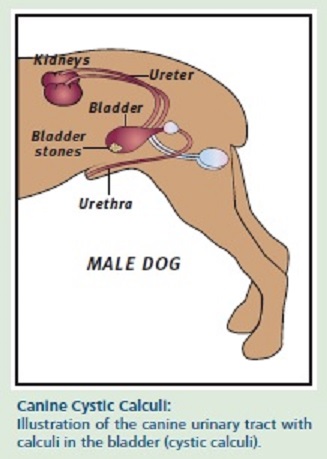 In this case, it is important to start training no later than 6 weeks after childbirth, train daily for at least 6 months, preferably under the supervision of a specialist. In the case of a long-standing disease, as well as with a pronounced degree of urine leakage, exercises are ineffective.
In this case, it is important to start training no later than 6 weeks after childbirth, train daily for at least 6 months, preferably under the supervision of a specialist. In the case of a long-standing disease, as well as with a pronounced degree of urine leakage, exercises are ineffective.
Will the operation help if urine leakage occurs at rest, when you urge to go to the toilet, the sound of the murmur of water, etc.?
Such complaints require a more thorough further investigation, since indicate the presence of overactive bladder.Based on the results of the examination, treatment is selected: OAB is treated with medications that block nerve endings in the wall of the bladder. Sling implantation is ineffective. With a combination of stress urinary incontinence and OAB, treatment should be combined: surgical and medication.
What to do if urinary incontinence is combined with prolapse of the pelvic organs?
With a pronounced degree of prolapse of the pelvic organs, the first stage is always the elimination of prolapse.Surgery for stress urinary incontinence can be performed as early as 1.5-2 months after surgical reconstruction of the pelvic floor using mesh implants. Simultaneous operations have a risk of postoperative complications – we do not recommend simultaneous surgical treatment of pelvic organ prolapse and urinary incontinence.
What if a woman is planning a pregnancy in the future?
After implantation, the prosthesis can safely plan a pregnancy and give birth through the natural birth canal.At the same time, the risk of recurrence of the disease does not exceed 20%, regardless of whether a cesarean section was performed or the birth went through a natural way.
.

 Accessed Jan. 30, 2019.
Accessed Jan. 30, 2019. Younger and middle-aged women near or at menopause experience this most commonly.
Younger and middle-aged women near or at menopause experience this most commonly.

 It passes over time.
It passes over time.